
Shattering the stasis of human evolution
Pioneering man of god-like stature
Erase and improve the temple foundation
Annihilate the meek, empty and inferior
– Devilry, Ouroborous Coiling
Some of us remember Finland as it was in my early youth; a humble country, tormented by Russia’s eternal presence, influenced by American dreams, taciturn men stubborn in idealism, tainted by alcohol and madness, working to preserve the ambiguous myths of freedom and independence while searching for truths in a society where the rules of piety and devotion did not apply anymore.
 Out of the silence and the cold of wintry nights arose wolven howls, bestial growls and the electric screech of demoniac strings. Clandestine groups scattered across the lake-adorned strip of land which was too vast in area for the people to be in constant touch except by phone and letter, took to the newest musical movement to inherit the throne of the kings of headbanging and thrash: grindcore. Xysma from Turku played Carcass inspired devolved bursts of groovy noise with the mechanical straightforward approach upon which Finnish industrial corporations later built their reputation.
Out of the silence and the cold of wintry nights arose wolven howls, bestial growls and the electric screech of demoniac strings. Clandestine groups scattered across the lake-adorned strip of land which was too vast in area for the people to be in constant touch except by phone and letter, took to the newest musical movement to inherit the throne of the kings of headbanging and thrash: grindcore. Xysma from Turku played Carcass inspired devolved bursts of groovy noise with the mechanical straightforward approach upon which Finnish industrial corporations later built their reputation.
Abhorrence, eventually to be mutated into an exploration of battle and folk attitudes in Amorphis, was among the first Death Metal formations in the real Scandinavian style. Morbid demos from around Finland swarmed like an infestation of maggots. The next few years’ worth of offerings continue to mesmerize and awe fans of old school Death Metal worldwide: Funebre, Sentenced, Disgrace, Phlegethon, Purtenance, Adramelech, Mordicus, Necropsy, Demigod, Vomiturition, Convulse, Depravity, Lubricant, Cartilage, Wings, Demilich and others.
Tuomas K.: I think it was a sort of tribute to our favorite bands in our case back when we started playing in 1993. We were heavily into the early 90′s Death Metal bands so it was kind of natural for us to give it a go, since we’ve had started trying to play our instruments only a couple of years earlier. There were only me and Roni S. playing back then and we never really intended to find another member back in the 90′s. But if we should’ve wanted another member to play, I think it would’ve been pretty hard to find one, because I think we knew only a few guys that were into Death Metal from our neighborhood. Then again, when Lie in Ruins started “for real” in the new millennium it was easier to get a lineup together.
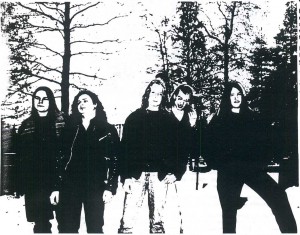 Jalas: I can agree on that this was the strongest period for the music and most of it died in the mid 1990′s when Black Metal music “took over” the underground. For me it is still a bit hard to analyze all this. I have always listened to what I want and when I want. I’m not saying that I didn’t have Black Metal seasons, but bands like Slayer and Morbid Angel were always there, lurking behind (both in my record player and as recording artists).
Jalas: I can agree on that this was the strongest period for the music and most of it died in the mid 1990′s when Black Metal music “took over” the underground. For me it is still a bit hard to analyze all this. I have always listened to what I want and when I want. I’m not saying that I didn’t have Black Metal seasons, but bands like Slayer and Morbid Angel were always there, lurking behind (both in my record player and as recording artists).
Death Metal as an item of fashion soon trailed away and the sonic temples formed by groups of school friends split up or moved on to styles better appreciated by their peers. Drinking alcohol in frozen woods and abandoned cellars while scrawling prayers to darkness and exhaling riffs of death was replaced by jobs, families and military service. Most of the cheap labels went out of business since B grade grindcore and Death Metal where not profitable anymore, dooming many of the aforementioned relics of the scene to obscurity until a partial resurrection through reissues and MP3 hubs.
Pyykkö: Finnish bands got tired of playing Death Metal and wanted to be something that they really couldn´t master very well. It was quite embarrassing shit to watch in some cases.
Those Once Loyal: The Last Stand of the Underground
The chromatic, fiery madness of original Death Metal was too much for the glamour-seeking generation who caught glimpses of extreme metal through the media attention of Black Metal and the TV exposure of “Gothenburg” and gothic metal. Other fans disregarded the old groups for their lack of consistency and humorous appearance, complete with interviews that often read like a discussion of retards in a hangover attempting a foreign language. But as always, true spirit is elusive and the self-importance of the new scene was hardly a better choice in life.
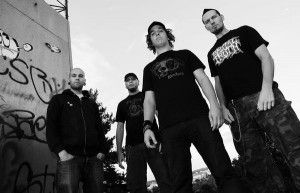 Not many of the original Death Metal fans were enthusiastic about Children of Bodom’s sappy power metal infiltration of Gothenburg techniques or Rotten Sound’s mechanical drum clinic grindcore. Nevertheless, the next generation of longhairs were inspired by these bands who had mastered the latest techniques of production perfect for a violently loud catharsis in car stereo or as a video game soundtrack. It was escapist, but not the Yuggothian dreams of a Demigod. In this case, influenced by groove metal and speed metal, commercial Death Metal sought to act as a youth counselor, harnessing hate and psychotic religion into the individualism of I don’t give a fuck and the various related ethical systems of liberalism.
Not many of the original Death Metal fans were enthusiastic about Children of Bodom’s sappy power metal infiltration of Gothenburg techniques or Rotten Sound’s mechanical drum clinic grindcore. Nevertheless, the next generation of longhairs were inspired by these bands who had mastered the latest techniques of production perfect for a violently loud catharsis in car stereo or as a video game soundtrack. It was escapist, but not the Yuggothian dreams of a Demigod. In this case, influenced by groove metal and speed metal, commercial Death Metal sought to act as a youth counselor, harnessing hate and psychotic religion into the individualism of I don’t give a fuck and the various related ethical systems of liberalism.
It is appropriate that while studio musicians’ and record label executives’ fake Death Metal from Helsinki was climbing the charts, the real good stuff started happening in the underground. Black Metal, as always, was an anti-social reaction to commercialization and the turn of the decade saw a resurgence of Finnish devil worshippers returning to the blasphemous sounds of Bathory and Darkthrone. The travesties at large left people wondering if Death Metal was truly dead and unable to bestow any more bloody and sacral offerings to the underground. This is where the morbid cults under our scrutiny enter the field.
Jalas: In the beginning of Slugathor our line-up was the same as the one we had before we started to play Death Metal. But soon we dropped one guitar player and only had 4 members in the band for a while. Our original vocalist, an esoteric person, Nebiros, was an important member in the beginning and wrote really
non-typical more philosophical lyrics than was heard in typical Death Metal at the time. Also the universe, our seen nature and all experiences influenced us, besides the spoiled “metal scene” that was in the late 90′s, which was also indeed very influential in a way. Definitely I would describe our approach more
brutal than most of the other bands we heard from Finland. This is one of the reasons to start the band like this, besides ultimate passion and love for the genre.
Haavisto: In fact the birth of Deathspawned Destroyer was a mere accident. We had meant to just play any kind of metal, in order to have some additional instrumental practice considering our other bands and so we decided to play Death Metal or a related style with Kai Lehtinen. Death Metal was a rather obvious choice because of a our mutual interest in the genre and the aim was to sound alike to old Cannibal Corpse, Blood, Autopsy etc. without any ambition to create something unique. However we started to churn out a great amount of songs, one each new rehearsal. Then we decided to make up a name for the band and we found a good one from a Cannibal Corpse album title: Bloodthirst. That’s what we were called at the time we did our first demo “Reign of Terror”. The demo sounds exactly like it was supposed to and the overall sound is like we meant it to be. The vocals were supposed to be brutal enough and the sound had to be muddy. To the surprise of both of us someone wanted to release our album. At this point we noticed that there were a few other Bloodthirsts around so we decided to go for a name that no-one else would have for sure, ending up with Deathspawned Destroyer. Originally it was Deathspawn Destroyer but we are told that it’s grammatically bullshit so we added the “-ed”, which still doesn’t sound as good to me as the wrongly spelled one. But anyway the band was born by accident, me and Lehtinen totally agree on the spirit.
Partanen: In 2004-2006 I had been doing a few ambient releases and when those projects hibernated, I had a fresh vision back into the darkness of Death Metal magic. I don’t know exactly what the inspiration for Sepulchral Aura was. There was a vision which commanded itself to manifest through my fleshly vessel and I’m glad it happened.
Lautamäki: Before we got our singer Ascended played some kind of mixture of thrash and Death Metal. Things started to evolve towards traditional Death Metal when we started to discover Finnish gems like Abhorrence, Amorphis, Demigod, Demilich. The sound of those bands was very immense. It was dark, heavy and still maintaining some very mystical quality to it. The only thing left to do was to create and emulate same atmospheres like those records have and introduce our own vision of Death Metal to the world. The hardest part of completing the lineup was to get a decent singer. When Tommi contacted us and joined in it was clear after few rehearsals that the lineup was perfect.
Pyykkö: The idea to form Hooded Menace happened more less by an accident during our Candlemass jam sessions. Instead of melodic vocals we used Death Metal grunts. It was fun to play and worked pretty well so we thought why not to make our own band that would would combine the elements of Doom and Death Metal. I have been wanting to do something like this for a long time. So that three-piece jam session group became the lineup for the “Fulfill the Curse” album.
Holm: Our guitarist Grave’s urge for self-expression and inexhaustible well of riffs is what ultimately inspired the birth of Devilry. Everything else is inconsequential and not of great importance at all.
The new millennium saw a legion of astute musicians interested in unleashing explosive, severe and gripping metal without taking part in the pretense of the new generation of Black Metal. In many ways, the sacred and primal integrity of old school metal had collapsed because widespread attention had created an unstable communal atmosphere of unclear and mismatched intentions. That is why most of what we hear in mainstream media regarding new metal is irony, jokes about “true metal” and meta-metal bullshit filled with endless self-references. Yet, a strong web of personal contacts, by letter, phone or Internet, fueled the fires of Death Metal, along with a fanatically devoted fan base.
Lie in Ruins: Swallowed by the Void
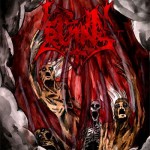 The veteran Death Metallers from Olari practiced and mastered their Scandinavia influenced art for 15 years before their first release on a label, the impressive “Architecture of the Dead” EP featuring older compositions. While this unique band seemed to receive very little promotion, disciples prayed for the day of reckoning when this constellation could bestow their malevolence in full force upon the wretched scene. The long, exhausting spell “Swallowed by the Void” was to be the definitive answer to these inquiries. Sluggish, conjuring and micro-melodic abyss anthems pay unyielding tribute to the likes of Dismember and Grotesque, aiming for an evil glory that betrays the way death metal lost the innocent meddling in dark arts prevalent in the late 80’s and discovered serious ideologies by the force of contamination and crossbreeding with Black Metal. Especially the progressive moods of the deadly closing track “Bringer of Desolation”, reminiscent of the Lovecraftian horror pathos of the longer tracks by Nile deserves an inclusion in the Death Metal canon of the decade. Serious catacomb dwelling fans of Repugnant and Necros Christos will feel completely at home with Lie in Ruins’ atmospheric, sacral method of composition which eschews fast and classical parts, but returns to the Sabbath-ian roots of primal death doom experience.
The veteran Death Metallers from Olari practiced and mastered their Scandinavia influenced art for 15 years before their first release on a label, the impressive “Architecture of the Dead” EP featuring older compositions. While this unique band seemed to receive very little promotion, disciples prayed for the day of reckoning when this constellation could bestow their malevolence in full force upon the wretched scene. The long, exhausting spell “Swallowed by the Void” was to be the definitive answer to these inquiries. Sluggish, conjuring and micro-melodic abyss anthems pay unyielding tribute to the likes of Dismember and Grotesque, aiming for an evil glory that betrays the way death metal lost the innocent meddling in dark arts prevalent in the late 80’s and discovered serious ideologies by the force of contamination and crossbreeding with Black Metal. Especially the progressive moods of the deadly closing track “Bringer of Desolation”, reminiscent of the Lovecraftian horror pathos of the longer tracks by Nile deserves an inclusion in the Death Metal canon of the decade. Serious catacomb dwelling fans of Repugnant and Necros Christos will feel completely at home with Lie in Ruins’ atmospheric, sacral method of composition which eschews fast and classical parts, but returns to the Sabbath-ian roots of primal death doom experience.
Devilry: Rites for the Spring of Supremacy
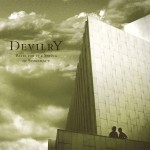 One of the most anti-social and least compromising commando squads from Finland in any musical genre, Devilry’s series of EP’s cumulated during the decade into an impressive demonstration of technical and lyrical ability that converted hordes of Black Metal listeners into old school Death Metal and vicious thrash. Like a less confused “The Laws of Scourge” era Sarcofago, Devilry abstains from long buildups to frame scenes of street violence and political upheaval in robotically symmetric percussion and inhuman, precise, spouting syllables of learned rhetoric. One of the fastest Finnish metal bands, at least in overall impression, Devilry quotes Slayer for a reductionist but holistic approach to songwriting which means that each song is built from a clearly defined set of riffs arranged to unleash the most powerful experience of intensity on the listener, while Sir Holm’s text praises the law and order of a reich that would be built according to the code of the warrior and rule of the naturally supreme. Essays could be written about Devilry’s interest in beauty, as despite the feral character of the music all songs are geometrical complexes with no loose parts hanging and even the cover picture is a serene, celestial scene incorporating Finnish functionalist architecture. Even the condemnation and hate that hangs as an eternal cloud upon the political rants of Devilry, are mostly posed as arguments of: what is not beautiful, does not deserve to be upheld, not even tolerated.
One of the most anti-social and least compromising commando squads from Finland in any musical genre, Devilry’s series of EP’s cumulated during the decade into an impressive demonstration of technical and lyrical ability that converted hordes of Black Metal listeners into old school Death Metal and vicious thrash. Like a less confused “The Laws of Scourge” era Sarcofago, Devilry abstains from long buildups to frame scenes of street violence and political upheaval in robotically symmetric percussion and inhuman, precise, spouting syllables of learned rhetoric. One of the fastest Finnish metal bands, at least in overall impression, Devilry quotes Slayer for a reductionist but holistic approach to songwriting which means that each song is built from a clearly defined set of riffs arranged to unleash the most powerful experience of intensity on the listener, while Sir Holm’s text praises the law and order of a reich that would be built according to the code of the warrior and rule of the naturally supreme. Essays could be written about Devilry’s interest in beauty, as despite the feral character of the music all songs are geometrical complexes with no loose parts hanging and even the cover picture is a serene, celestial scene incorporating Finnish functionalist architecture. Even the condemnation and hate that hangs as an eternal cloud upon the political rants of Devilry, are mostly posed as arguments of: what is not beautiful, does not deserve to be upheld, not even tolerated.
Tuomas K.: It has been fairly easy for us to find contacts in the Death Metal underground so far. I think the communications are now way better compared to 90′s. It is easier to get yourself “heard”. The downside is that you also get a lot of these individuals or groups who want to get themselves heard, so you’ll have to dig a little deeper to find something worthwhile. In the end it’s still the music that speaks for itself, so that has to do a lot in order to get support or even fans of your work.
Jalas: I also think it was not hard to find contacts for people who are really into Death Metal. Just look at Tomasz (Time Before Time). Despite his young age, he has been long time in the underground and he actually was also one of the first constant contacts I found (I think back in 2001 or so).
Pyykkö: Nowadays getting contacts is very easy because of the Internet. It´s damn easy to spread your music over the Internet. Myspace is a very good tool for that. There´s an endless amount of crap but also lots of good stuff. The communication has become easier but then again there´re so many bands around that you have to be pretty damn good to stand out. I have found these times very good for metal. There is still a demand for a “real thing” and people around seem very enthusiastic and passionate. The old days won´t come back. The most exciting era of metal lies in the past but man, I´m having a blast today! Things could be much worse. I´m not a huge follower of the scene but it seems to be doing really fine. Metal is still exciting and fresh in a very rotten way though!
Holm: Devilry has been such a solitary entity during the past few years that I do not have a clue about what goes on and where. I really do not even care. There is obviously support for our cause, else we would not exist in the public at all, but I am not interested in such trivial matters as finding fans and contacts.
Partanen: For Sepulchral Aura the response has been surprisingly good. I guess there’s support, fans and contacts out there at least for those who deserve, but I’m not that interested about that. But still it’s good to hear that some people have liked the CD and care to promote it and Sepulchral Aura in their own way. In general, people around me are not interested in Death Metal.
Lautamäki: There has been minor Death Metal scene rising in Finland and it has been interesting to see that we are not the youngest band around devoted to this art. We were also just recently interviewed by Finnish metal magazine Miasma so I would say that there is slight interest growing to this style inside Finland. Also gigs like Slugathor, Lie in Ruins and Stench Of Decay in Helsinki are helping the scene a lot. Many people don’t view Death Metal as an ideological and devoted music style such as Black Metal for example, but there has been so many Death Metal bands who have been loyal to their style and ideology for years and should be honored for showing such a devotion to this form of art. Also new genres like this so called Deathcore spawning from United States are distorting the views of what Death Metal is really about.
Slugathor: Echoes from Beneath
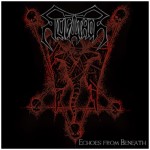 Slugathor is already a veteran of “new” Finnish Death Metal, having debuted in 2000 with the “Delicacies of the Cadaver” EP right when everyone else was concentrating in elitist Black Metal fantasies. The morbid, dirty, ugly and non-theatrical submersion to grinding but dimensional grave exhumations was initially scorned upon but eventually they even signed to one of the premier Black Metal labels of the world, Drakkar Records from France. By the time of the third album “Echoes from Beneath” Slugathor knows exactly how to manipulate intensity and the listening experience of both black and Death Metal listeners, opening cavernous vaults and passages through warped holes in time and space using mostly foreboding rhythm guitar chugging of patterns familiar from since the dawn of Death Metal, ethereal melodic background leads by Tommi Grönqvist and evil vocals by Axu Laakso that borrow technique from both Deicide and Demilich without sounding as extreme as them. Like Bolt Thrower, this band is all about heaviness, ambience and symmetry while all “display” type of elements of technical Death Metal are kept to a minimum. A special mention goes to Ilmari Jalas’ drum technique which borrows heavily from Doom Metal in building up groove to a climax where dynamics emphasize the rhythm riff so that the only possibility is to headbang convulsively.
Slugathor is already a veteran of “new” Finnish Death Metal, having debuted in 2000 with the “Delicacies of the Cadaver” EP right when everyone else was concentrating in elitist Black Metal fantasies. The morbid, dirty, ugly and non-theatrical submersion to grinding but dimensional grave exhumations was initially scorned upon but eventually they even signed to one of the premier Black Metal labels of the world, Drakkar Records from France. By the time of the third album “Echoes from Beneath” Slugathor knows exactly how to manipulate intensity and the listening experience of both black and Death Metal listeners, opening cavernous vaults and passages through warped holes in time and space using mostly foreboding rhythm guitar chugging of patterns familiar from since the dawn of Death Metal, ethereal melodic background leads by Tommi Grönqvist and evil vocals by Axu Laakso that borrow technique from both Deicide and Demilich without sounding as extreme as them. Like Bolt Thrower, this band is all about heaviness, ambience and symmetry while all “display” type of elements of technical Death Metal are kept to a minimum. A special mention goes to Ilmari Jalas’ drum technique which borrows heavily from Doom Metal in building up groove to a climax where dynamics emphasize the rhythm riff so that the only possibility is to headbang convulsively.
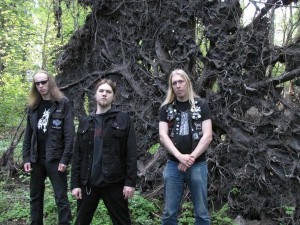 Jalas: Bolt Thrower influenced Slugathor really strongly in the beginning and always. Some people compare Slugathor also to bands like Asphyx or Obituary, but I would say that these influences are only minor and definitely more inspiration has flown, when we listened to bands such as Demigod, old Amorphis, Grave, Incantation and old Mortician. Definitely Morbid Angel also, but this was not heard so well on our music very much, I think. Also some bands, like Kaamos and Necros Christos at least influenced me in a way, because they had such unique concepts and ultimate feeling of death. Some more obscure names pop up to my mind, such as Bloody Gore (Indonesia), Darklord (Australia), all female band Mythic and so on. You know, it was all these 7″EP and demos we listened at the time besides full-length albums. Even demo-material of Dying Fetus, which could be a shock (?) to some because of their nowadays political message. But that band was brutal as hell when we first heard them. Also they were lyrically more into mutilation, etc. back then. Maybe we got into that because of teenage enthusiasm, but for some reason all this stuff still has very special place in our hearts, because they developed us to become what we are now.
Jalas: Bolt Thrower influenced Slugathor really strongly in the beginning and always. Some people compare Slugathor also to bands like Asphyx or Obituary, but I would say that these influences are only minor and definitely more inspiration has flown, when we listened to bands such as Demigod, old Amorphis, Grave, Incantation and old Mortician. Definitely Morbid Angel also, but this was not heard so well on our music very much, I think. Also some bands, like Kaamos and Necros Christos at least influenced me in a way, because they had such unique concepts and ultimate feeling of death. Some more obscure names pop up to my mind, such as Bloody Gore (Indonesia), Darklord (Australia), all female band Mythic and so on. You know, it was all these 7″EP and demos we listened at the time besides full-length albums. Even demo-material of Dying Fetus, which could be a shock (?) to some because of their nowadays political message. But that band was brutal as hell when we first heard them. Also they were lyrically more into mutilation, etc. back then. Maybe we got into that because of teenage enthusiasm, but for some reason all this stuff still has very special place in our hearts, because they developed us to become what we are now.
The slow new resurgence of Finnish Death Metal was a joy to behold as the pieces of music were sincere, the young fan base was delighted to get rid of the obnoxious attitudes that had contaminated the feeling of Black Metal and many of the bands and their releases were still very much conceptually constructed with great care and attention. Devilry spoke of a militant order against degeneration, Khert-Neter conjured images of ancient Egyptian paths to enlightenment, Sotajumala and Deathspawned Destroyer delved into the sufferings of the Finnish soldiers and Hooded Menace used horror movies as absurd and illustrative symbols for the infinite darkness that surrounds the apparent order in the sequence of human lives.
Deathspawned Destroyer: WarBloodMassacre
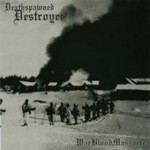 Primitive but astoundingly direct, Deathspawned Destroyer from Huittinen (home of Vordven) has with their two full lengths established Finnish parallels to grindcore influenced bands such as Blood and even Blasphemy but remained widely unnoticed because of a lack of pretension and promotion. While “The First Bestial Butchery” album indulged in gore fantasies of Finnish rural winter madness, “WarBloodMassacre” logically continues to explore real world horrors that happened within the same fields and woods we inhabit here. The shades and violent ghosts of Finnish war history 1939-1945 are not haunted, prophetic or wise in the nearly brainless, stomach churning vision of Deathspawned Destroyer. This is music and lyric of the gut, the trenches and the perpetual dirt. It is Bolt Thrower if it was created by boozing Finnish woodsmen instead of punk influenced British soccer fans. The riffs would probably tell their story as well to men who lived 10,000 years ago, provided they were fighters with hate for the scourge of slavery and love for their home woodlands. The slower parts approximate the atmospheres of Amebix brand of ethereal hardcore. The band gets a chance to try its hand at epic length composition with the more than 10 minute “Doom Before Death” and why the simplicity of structure may make progressive listeners cringe, there is hardly a criticism to be made about the way the parts are elaborated by the cruel lyrics that detail the sufferings of a prisoner of war under torture. The relentless forward driving rhythm and ghoulish voice of the band might be borrowed from the old school, but the vicious, nearly cartoonish black-and-white history flashback is something that needs to be heard to be believed.
Primitive but astoundingly direct, Deathspawned Destroyer from Huittinen (home of Vordven) has with their two full lengths established Finnish parallels to grindcore influenced bands such as Blood and even Blasphemy but remained widely unnoticed because of a lack of pretension and promotion. While “The First Bestial Butchery” album indulged in gore fantasies of Finnish rural winter madness, “WarBloodMassacre” logically continues to explore real world horrors that happened within the same fields and woods we inhabit here. The shades and violent ghosts of Finnish war history 1939-1945 are not haunted, prophetic or wise in the nearly brainless, stomach churning vision of Deathspawned Destroyer. This is music and lyric of the gut, the trenches and the perpetual dirt. It is Bolt Thrower if it was created by boozing Finnish woodsmen instead of punk influenced British soccer fans. The riffs would probably tell their story as well to men who lived 10,000 years ago, provided they were fighters with hate for the scourge of slavery and love for their home woodlands. The slower parts approximate the atmospheres of Amebix brand of ethereal hardcore. The band gets a chance to try its hand at epic length composition with the more than 10 minute “Doom Before Death” and why the simplicity of structure may make progressive listeners cringe, there is hardly a criticism to be made about the way the parts are elaborated by the cruel lyrics that detail the sufferings of a prisoner of war under torture. The relentless forward driving rhythm and ghoulish voice of the band might be borrowed from the old school, but the vicious, nearly cartoonish black-and-white history flashback is something that needs to be heard to be believed.
Haavisto: Our lyrics were far from philosophy and deep meanings. The lyrics of “Reign of Terror” were almost completely taken from “The Diary of Jack the Ripper”, but edited enough to not be a clear plagiarism. On “The First Bestial Butchery” we built new lyrics almost by putting one harsh word after another and looking at the result. We did pay enough attention to lyrics to get one more sensible piece written by someone outside the band: “Autopsy Romance”. The cover art of the album was an idea we had in mind for a long time but had no suitable use before. The second full-length “WarBloodMassacre” was something completely different as the lyrics were entirely done by a person not in the band, with greater care and attention and with the war thematic. I think one can clearly see the main influence at the time being Bolt Thrower. I think the cover art was arranged for by someone at Bestial Burst and very fine they were, thanks for them. A special mention must go to the cover artist of the Bloodhammer/Deathspawned Destroyer split, as one couldn’t make a better representation of the old school spirit. The finest cover art ever.
Jalas: Like I said, Slugathor’s old vocalist Nebiros had quite philosophical lyrical themes. Some lyrics are easy to read, but not that easy to understand right away. They make you think. Well, after he went out of space and started to sing to birds instead of making brutal death noise, we had Axu in the band and he would be the right person to answer about the concept. I’m sure he had his own vision of what is a pure Death Metal lyric.
Pyykkö: The lyrical and graphic concept of Hooded Menace mostly comes from the 70’s Spanish horror film series “The Blind Dead”. That defines our name, the logo and the basic atmosphere of the band. All that slow motion and creepy, menacing mood of those movies are there in Hooded Menace. If you have seen the movies you know what I mean. “The Blind Dead” is the bottom line but there´s more to Hooded Menace than that. We have songs based on other horror films too and some lyrics come from the writer´s own imagination. That sleazy imagination is always strongly influenced by horror movies though! There´s no deeper philosophy to it. We are all about horror! That´s why I sometimes call us as a horror death/doom band. No horror, no Hooded Menace.
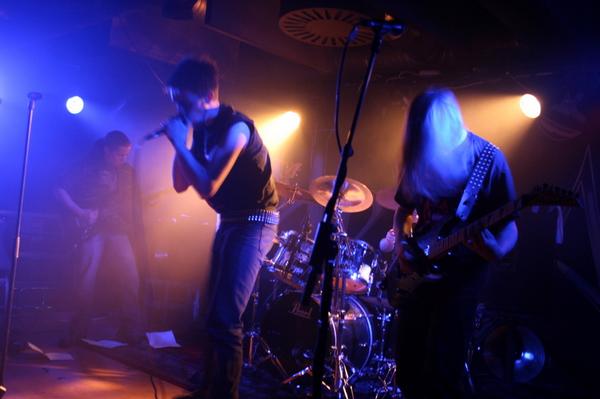 Tuomas K.: Lie in Ruins is conceptually 100% dealing with death, darkness and all things related. After all, this is Death Metal, so the lyrics and the imagery definitely should reflect that.
Tuomas K.: Lie in Ruins is conceptually 100% dealing with death, darkness and all things related. After all, this is Death Metal, so the lyrics and the imagery definitely should reflect that.
Partanen: The nucleus of Sepulchral Aura could be the juxtapositioning of chaos and cosmos, life and death and their intertwined yet paradoxical counter-natures. If one knows the Gnostic text “Thunder Perfect Mind” it could be easier to grasp the drift here. The rest is basically visions and of course experiences transmuted into sound and words. No particular philosophy, but reflections of the path toward self-knowledge by illuminating the shadowed aspects within, self-discipline through warrior and mystic ideals and becoming a higher being.
Holm: For Devilry, National Socialism as an all-encompassing Weltanschauung is the foundation on which everything is built.
Lautamäki: To keep things simple I just say that we are influenced and inspired by a very universal subject called death. Western world has a very sick and unnatural attitude towards such natural thing as death. It is totally ignored or people pretend that it doesn’t even exist while media has demonized it to the point that there are people who really don’t understand that death is something one has to face sooner or later. Not only concerning individuals and families, but one should understand that every civilization and culture will face death as it is seen through history. Only death is real!
Sepulchral Aura: Demonstrational CD MMVII
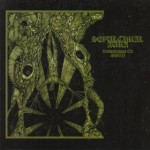 Sepulchral Aura is not the first time that mastermind J. Partanen (Second Sun, Aeoga etc.) has picked up the guitar and the drums but it’s the first time he produced a minor classic for the underground to remember from this era of harsh and esoteric Finnish metal. Cryptic, obscurant and violent atonality bursts from Partanen’s figurative composing pen much like Ligeti had developed a passion for speed metal and Death Metal, far from the technical pretensions of the Cynics and Pestilences of the world. Whoever upheld the common misconception that Death Metal is not mysteries and occult metaphor, whoever thought we needed the Black Metal “kvlt” to make us interested in life’s hidden forces and spiritual darkness, had not heard the very dimensional experience Sepulchral Aura engages us in. Lead guitars are non-musical but clear and comprehensible like alien messages sent straight into the brain cortex, vocals are guttural and rasped voices somewhere between animalism and insanity, drums sound like a tribute to old Carcass except for some very idiosyncratic ways to use rhythm and nuance to underline the chaos god that devises the riffs. It is impossible to consider a discussion of this demo that doesn’t mention the legacy of Australian Death Metal and War Metal all the way from Sadistik Exekution to the furthest reaches of Portal and Stargazer. It is very much the resurrection of the sincere belief and primal energy that fueled Bestial Warlust, but in this case consecrated by the wasteland of the North instead of the haunted chasms in Down under.
Sepulchral Aura is not the first time that mastermind J. Partanen (Second Sun, Aeoga etc.) has picked up the guitar and the drums but it’s the first time he produced a minor classic for the underground to remember from this era of harsh and esoteric Finnish metal. Cryptic, obscurant and violent atonality bursts from Partanen’s figurative composing pen much like Ligeti had developed a passion for speed metal and Death Metal, far from the technical pretensions of the Cynics and Pestilences of the world. Whoever upheld the common misconception that Death Metal is not mysteries and occult metaphor, whoever thought we needed the Black Metal “kvlt” to make us interested in life’s hidden forces and spiritual darkness, had not heard the very dimensional experience Sepulchral Aura engages us in. Lead guitars are non-musical but clear and comprehensible like alien messages sent straight into the brain cortex, vocals are guttural and rasped voices somewhere between animalism and insanity, drums sound like a tribute to old Carcass except for some very idiosyncratic ways to use rhythm and nuance to underline the chaos god that devises the riffs. It is impossible to consider a discussion of this demo that doesn’t mention the legacy of Australian Death Metal and War Metal all the way from Sadistik Exekution to the furthest reaches of Portal and Stargazer. It is very much the resurrection of the sincere belief and primal energy that fueled Bestial Warlust, but in this case consecrated by the wasteland of the North instead of the haunted chasms in Down under.
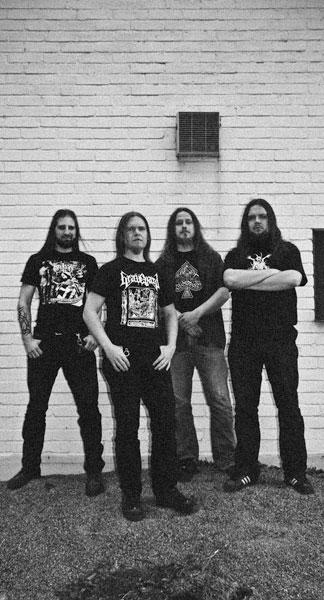 Partanen: Intent and improvisation played a major part in how the music itself turned out to be, so I cannot talk about conscious efforts of tributes to particular bands etc.
Partanen: Intent and improvisation played a major part in how the music itself turned out to be, so I cannot talk about conscious efforts of tributes to particular bands etc.
New Finnish Death Metal is not characterized by particular attributes in sound or can be fitted into one of the trends at large in popular Death Metal, such as fusion Death Metal, “melodic extreme metal” or hyperspeed brutal metal. Most of the bands perform intricate but non-pretentious variations on the classic Scandinavian styling (with lots of Boss Heavy Metal pedals around!), with an emphasis on accuracy and consistency of imagery and lyrics that has been newly found in the Black Metal wave of total art. Trey Azagthoth’s description of Death Metal as a feeling like serpents crawling in the amplifier is very apt in most cases. However, the Death Metal acts mostly wish to keep away from the personality cults and idol worship prevalent in other extreme metal and just keep the music fresh and intuitive.
Haavisto: That’s it. Death Metal is a feeling and when you find the right feel, your material starts to take form and develop and if it sounds a bit familiar already, who cares? It will be new because of the different sound and the feeling transmitted by the end result. It doesn’t need to be that new and special. “The First Bestial Butchery” had the most intense feeling because exactly the one I had about the resulting album was shared by many who listened to it.
Holm: Creating something fresh, Death Metal or not, is utterly unimportant to me. I am more interested in just crafting good songs. Otherwise it should be difficult to relay anything through it successfully.
Jalas: Without listening to any modern or happy shit, I think the variation becomes from small things, changing tempos, repeating riffs but adding a lead guitar. To be honest with these methods it is hard to invent something new, but there are still some ways to invoke the Draco.
Tuomas K.: Actually that description from Mr. Azagthoth is pretty good one! Haven’t heard that one before. As for creating fresh tunes of death, I think it has to do with inspiration first. Sometimes you could have an inspirational rush and just write a whole song from one go. The second option usually is that you dig into your “database” and pick ingredients from here and there and combine those parts to a new song. One thing that is obligatory to play or write Death Metal is a very low tuning on the stringed instruments, at least in my opinion. As for distortion goes, we opt for the Boss HM pedal too, only we don’t use it exactly to get the legendary Sunlight-sound. Add some doomier parts and twisted melodies, and there you go.
Lautamäki: Of those main ingredients listed above we only have the Boss heavy metal pedal which our bassist uses as distortion, so that’s the tiny bit of Swedish sound we have! We always try to deliver crushing and heavy songs which still aim to attach the mystical and ethereal feeling through dissonant melodies and solos inspired by mysteries of death and decay.
Ascended: The Temple of Dark Offerings EP
 It seems sometimes like a wonder that so many Death Metal classics have been created by youngsters working on their first demo, EP or album but clearly it is a basis for less calculated and more intense statements of the primal truths these eyes have witnessed on their journey so far on earth. While the least experienced musicians on the list, Ascended from Pori prove not one bit worse in channeling the breath of exhumed grave into the nostrils of the expectant Death Metal fan. Simple but glorious, Ascended likes to keep it slow and groove onwards through melodies that recall old Tiamat, Slayer and even a bit of Black Metal. Much like Mystifier or Necros Christos, vocals intone an animated ritual chant to the dead in an almost numbingly rhythmic and non-varied manner. Sound is sparse and clear, with a surprising gap in the lower register lending the proceedings an airy, ethereal vibe of darkness. The foreboding calm of tracks such as “Wedlock of Lust” or the multi-part “Mesmerizing Stench” should be obligatory lessons for most of this generation’s Black Metal bands in what they have missed in pacing and atmospheres of evil. Technical ability and pages of morbid theology do not substitute for the realm of visions and subdued melodies that remind mortals of that which shall be over all too soon – the summer of life, clouded by the storms of the unknown, while the reaper grins to you in the horizon.
It seems sometimes like a wonder that so many Death Metal classics have been created by youngsters working on their first demo, EP or album but clearly it is a basis for less calculated and more intense statements of the primal truths these eyes have witnessed on their journey so far on earth. While the least experienced musicians on the list, Ascended from Pori prove not one bit worse in channeling the breath of exhumed grave into the nostrils of the expectant Death Metal fan. Simple but glorious, Ascended likes to keep it slow and groove onwards through melodies that recall old Tiamat, Slayer and even a bit of Black Metal. Much like Mystifier or Necros Christos, vocals intone an animated ritual chant to the dead in an almost numbingly rhythmic and non-varied manner. Sound is sparse and clear, with a surprising gap in the lower register lending the proceedings an airy, ethereal vibe of darkness. The foreboding calm of tracks such as “Wedlock of Lust” or the multi-part “Mesmerizing Stench” should be obligatory lessons for most of this generation’s Black Metal bands in what they have missed in pacing and atmospheres of evil. Technical ability and pages of morbid theology do not substitute for the realm of visions and subdued melodies that remind mortals of that which shall be over all too soon – the summer of life, clouded by the storms of the unknown, while the reaper grins to you in the horizon.
Hooded Menace: Fulfill the Curse
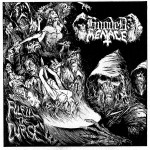 Perhaps no other themes in metal have suffered such an ugly abuse as those of gothic horror and its symbolic exploration of the unconscious, sexual and paranoid impulse within man. As plastic, theatrical and money-hungry hedonists swarmed like a pack of rats to invade Death Metal and Black Metal record labels, they left behind a legacy of fear which caused later audiences to abhor the careful and elegant treatment of the macabre that was the original intention of bands like Paradise Lost and My Dying Bride, before the same bands’ later development infused it with a homosexual taint. While Hooded Menace has not yet produced a work to outweigh the elders, it’s done more than its share in reviving hope in a form with plenty of potential. If there is one thing that has been sadly lacking in the last decade of Death Metal, it’s beautiful and clever melodies. Led by veterans from Joensuu’s progressive Death Metal cult Phlegethon, Hooded Menace pounds, thrashes and makes dramatic gestures of sweeping funereal melodies perfect for a Candlemass album while the lyrics are growled by Lasse Pyykkö (“Leper Messiah”) as absurdist anecdotes straight from 50’s B-grade horror movies.
Perhaps no other themes in metal have suffered such an ugly abuse as those of gothic horror and its symbolic exploration of the unconscious, sexual and paranoid impulse within man. As plastic, theatrical and money-hungry hedonists swarmed like a pack of rats to invade Death Metal and Black Metal record labels, they left behind a legacy of fear which caused later audiences to abhor the careful and elegant treatment of the macabre that was the original intention of bands like Paradise Lost and My Dying Bride, before the same bands’ later development infused it with a homosexual taint. While Hooded Menace has not yet produced a work to outweigh the elders, it’s done more than its share in reviving hope in a form with plenty of potential. If there is one thing that has been sadly lacking in the last decade of Death Metal, it’s beautiful and clever melodies. Led by veterans from Joensuu’s progressive Death Metal cult Phlegethon, Hooded Menace pounds, thrashes and makes dramatic gestures of sweeping funereal melodies perfect for a Candlemass album while the lyrics are growled by Lasse Pyykkö (“Leper Messiah”) as absurdist anecdotes straight from 50’s B-grade horror movies.
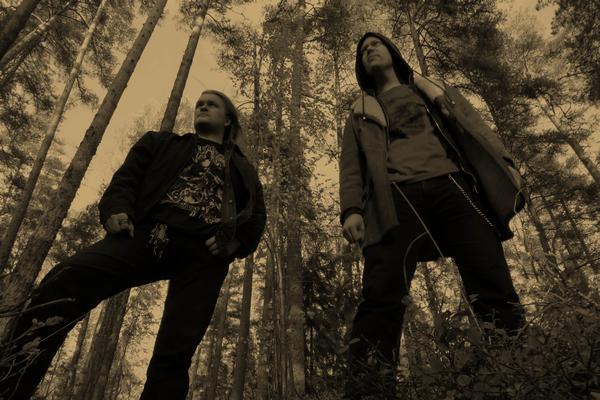 The apparent cheapness of “Grasp of the Beastwoman” or “Theme from Manhattan Baby” is offset by the care and calculation which proves that Hooded Menace has a profound affection for its infantile source material. This trait establishes a profound link with the old school of Death Metal, the musical manifestation of the gore and trash movie obsessions of kids whose awareness of the relevance of death and morbidity to philosophical discourse was only intuitive and spontaneous.
The apparent cheapness of “Grasp of the Beastwoman” or “Theme from Manhattan Baby” is offset by the care and calculation which proves that Hooded Menace has a profound affection for its infantile source material. This trait establishes a profound link with the old school of Death Metal, the musical manifestation of the gore and trash movie obsessions of kids whose awareness of the relevance of death and morbidity to philosophical discourse was only intuitive and spontaneous.
Pyykkö: We owe a lot to bands like Candlemass, Cathedral and Winter. It´s not about paying tribute, it´s about making as good slow Death Metal as we can. It´s not a tribute for tribute´s sake, you know. This band is very natural thing actually. When I write metal songs I don´t try to be old school. I am “old” and schooled during the golden days of Death Metal so old school is pretty much what comes out whether I wanted or not. One reason why we decided to form this band was because we thought there weren´t enough decent Death/Doom bands around. We use the elements that we think will make the greatest slow Death Metal. This is our vision of how this type of music should sound at its best. Basically what we do is, I´m going really black and white now, recycle all those Candlemass and Cathedral riffs, throw in some creepy Death Metal vocals and spice it up with some horror soundtrack influences. We just know what elements there has to be in our songs… or at least we know what elements we definitely don´t want to include! It´s not hard actually. It all comes out very naturally. I bet you could tell if we sounded forced. The result is something that in some putrid way sounds fresh… at least to our ears it does, and that´s pretty much enough to keep us going.
The Lords of the Shadow Realm: The Future of Finnish Death
 While most media continues to highlight the hyped up Heavy, Black and Doom bands from the Land of the Thousand Lakes, we at Deathmetal.Org wish to raise a mighty salute to the legions of blasphemy and resistance who are spreading evil Death Metal amidst the wastelands of the frozen North. Unique, demanding and powerful, these bands are not in the way to become the next big thing in Death Metal, but I have the sincere hope that each reader will find something in this diverse assortment that speaks to him in the voice of transcendental communication which is the reason we have been interested in this art for all these years. These hordes will either dominate the world or rule in shadows.
While most media continues to highlight the hyped up Heavy, Black and Doom bands from the Land of the Thousand Lakes, we at Deathmetal.Org wish to raise a mighty salute to the legions of blasphemy and resistance who are spreading evil Death Metal amidst the wastelands of the frozen North. Unique, demanding and powerful, these bands are not in the way to become the next big thing in Death Metal, but I have the sincere hope that each reader will find something in this diverse assortment that speaks to him in the voice of transcendental communication which is the reason we have been interested in this art for all these years. These hordes will either dominate the world or rule in shadows.
Pyykkö: Well, you never know about the future. I´d be happy with ruling in shadows, haha! Hooded Menace will never be hugely popular anyway. My ambition has always been to beat myself. To keep on making decent music as long as it´s fun, passionate and exciting. You possibly have noticed there have been some changes to the lineup after the “Fulfill the Curse” album. The other guys left the city of Joensuu because of work and studies so now Hooded Menace is a duo with me on vocals, guitars and bass and Pekka on drums. Pekka was an easy and pretty obvious choice since I already play with him in Vacant Coffin. As long as we don´t want to play live we can work as a duo like forever but sure a bass player would be nice for the rehearsals. It can get a bit boring to rehearse the songs as a twosome. Our next move in “spreading evil” is of course to release our 2nd album. That should be out sometime in the first half of 2010 on Profound Lore!
 Haavisto: Once Lehtinen quit playing after the second Deathspawned Destroyer album, it meant an almost complete stop to our activity. We did two promising tracks with our new member Tuomas Murtojärvi, but we didn’t really get it properly going so the band and the Death Metal spirit has drifted away. People tend to have so much other things to do and the most important band related people have moved so far from us that when we have the occasional practice we play something totally different from Deathspawned Destroyer. The modern day Death Metal people seem anyway to be in a different world and there doesn’t seem to be a demand for old school ruckus. At least not among the “metalheads” seen in the streets around here. I haven’t followed either the recent developments in Death Metal, because the new bands don’t interest me one bit and the old ones have been devoured through and through many times. Deathspawned Destroyer rests in the shadows and maybe one day will be back and do something worth listening to… maybe. We need a guitarist who has a regular commitment to the project and who cares more about the attitude than playing right. It’s certain that things won’t work out again with the original Deathspawned Destroyer duo, but there’s no strife related to it. Hails to Lehtinen and everyone else who supported Deathspawned Destroyer and were a part of our activity in one way or another!
Haavisto: Once Lehtinen quit playing after the second Deathspawned Destroyer album, it meant an almost complete stop to our activity. We did two promising tracks with our new member Tuomas Murtojärvi, but we didn’t really get it properly going so the band and the Death Metal spirit has drifted away. People tend to have so much other things to do and the most important band related people have moved so far from us that when we have the occasional practice we play something totally different from Deathspawned Destroyer. The modern day Death Metal people seem anyway to be in a different world and there doesn’t seem to be a demand for old school ruckus. At least not among the “metalheads” seen in the streets around here. I haven’t followed either the recent developments in Death Metal, because the new bands don’t interest me one bit and the old ones have been devoured through and through many times. Deathspawned Destroyer rests in the shadows and maybe one day will be back and do something worth listening to… maybe. We need a guitarist who has a regular commitment to the project and who cares more about the attitude than playing right. It’s certain that things won’t work out again with the original Deathspawned Destroyer duo, but there’s no strife related to it. Hails to Lehtinen and everyone else who supported Deathspawned Destroyer and were a part of our activity in one way or another!
Tuomas K.: I think our ambition with Lie in Ruins is to create and release Death Metal which we find satisfying for ourselves. If there comes a time that I or we shouldn’t be satisfied with our work, I guess we should call it a day or at least take a timeout. If there should be any ambitions to create other kind of music, I think it should done under a different moniker, which I think that some of those old bands should’ve done as well.
Holm: There is no ambition in ruling in shadows. We already are. Supreme in the league of our own. That is where Devilry will stay too. Anything else would be doomed to fail.
Jalas: We never even thought about making some commercial music with Slugathor. I’m now proud to end this band without wimping out or changing style of music. I think we had our share of influence in the younger generation of Death Metal. It is unbelievable to notice that some new bands have started to sound
exactly like Death Metal is supposed to sound (1989-1991 era), even though they were hardly even born when those old bands recorded their classic demos or debut albums. Slugathor’s last offering of darkness will be a mini-album, in totalitarian Slugathor style, no compromise here either. We have played our last concert in Semifinal, Helsinki with Stench of Decay and Lie in Ruins. The band will be put on it’s already open grave, after a decade. Actually now when Slugathor’s time is over, me and Antti have decided to work on some very obscure and dark Death Metal. We just can’t stop this. Also the rest of Slugathor memebers are going to work on with their own musical projects. Which suits me the best “to dominate the world”, or “to rule in shadows”? I would choose the latter option.
Lautamäki: Ascended’s next big move is going to be a full-length. The process is delayed because of military service, but in Autumn 2010 we should be able to rehearse again with full lineup and maybe record the material by the end of the year. There’s plenty of material already written up, but there is just no time to rehearse it. One thing I can still promise is that the album is going to be nothing else than honest Death Metal. The only negative thing I can think of is that it is very hard to organize rehearsals since we have 5 members in the lineup.
Partanen: Also playing alone creates some practical obstacles, but they can be surpassed. I would prefer a real line-up, but due to certain aspects of the nature of SA, it is better to continue this way, at least for now. It is to become one with the shadows. Next release will be in 7″, 10″, or full-length format, but do not ask me when. The worthy music is visions, dreams, thoughts, discipline, magic, feeling and intent. The rest is a physical act. If you can smell the stench of transcendental death while playing, at least something is right. If you can see death, even better. If you die, best!
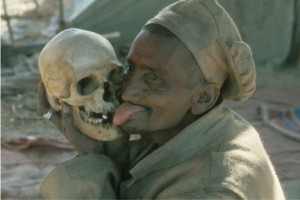 1. Introduction
1. Introduction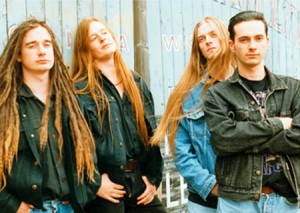 Vital musical forms rely on creativity, spontaneity and message over matter. It is the curse of the artist that often the best of their work is at the behest of youthful lunacy and drunken madness, the early recordings where they grasp at the straws of vision without quite having formulated the techniques for achieving them – so they improvise and as Nietzsche would say, “give birth to a dancing star“. ‘Human‘, ‘Tales from the Thousand Lakes‘ and ‘Heartwork‘ are all perfect examples of a band with the full arsenal of accumulated weapons, evolved to near its maximum potential in knowing exactly how to compose all the contemporary forms of metal, from death metal and grindcore to pop progressive, even soft rock.
Vital musical forms rely on creativity, spontaneity and message over matter. It is the curse of the artist that often the best of their work is at the behest of youthful lunacy and drunken madness, the early recordings where they grasp at the straws of vision without quite having formulated the techniques for achieving them – so they improvise and as Nietzsche would say, “give birth to a dancing star“. ‘Human‘, ‘Tales from the Thousand Lakes‘ and ‘Heartwork‘ are all perfect examples of a band with the full arsenal of accumulated weapons, evolved to near its maximum potential in knowing exactly how to compose all the contemporary forms of metal, from death metal and grindcore to pop progressive, even soft rock.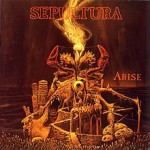 Coming off the back of the raging, deathly, speed metal of ‘Beneath The Remains‘, Sepultura stay true to the compact musical execution that began making itself clear on the ‘Schizophrenia‘ album onwards. There is more variation in pace, with the lower tempo compositions often resemblant of the riotous and anthemic cycles of of ‘Beneath The Remains’ played out in suspended animation. The introduction of the now ‘tribal’ meme that first makes itself present in Sepultura’s music introduces itself through in various songs, and whilst here it is applied in a more than tasteful enough manner it sometimes gives the idea that whilst this indicates an ‘open-mindedness’ to the average listener, on deeper insight it gives light to the possibility that the band by this time may have been starting to run short of creative ideas. Whilst this is a very good record by Sepultura, prevailing characteristics get the upper hand, and in a year where speed metal had long had it’s glory days, and death metal attaining new peaks of aggression in a period of artistic blossom, it’s no surprise looking back that the dumbed down and singularly ‘angry’ mosh-fodder that was ‘Chaos A.D.’ would suceed this work. –Pearson
Coming off the back of the raging, deathly, speed metal of ‘Beneath The Remains‘, Sepultura stay true to the compact musical execution that began making itself clear on the ‘Schizophrenia‘ album onwards. There is more variation in pace, with the lower tempo compositions often resemblant of the riotous and anthemic cycles of of ‘Beneath The Remains’ played out in suspended animation. The introduction of the now ‘tribal’ meme that first makes itself present in Sepultura’s music introduces itself through in various songs, and whilst here it is applied in a more than tasteful enough manner it sometimes gives the idea that whilst this indicates an ‘open-mindedness’ to the average listener, on deeper insight it gives light to the possibility that the band by this time may have been starting to run short of creative ideas. Whilst this is a very good record by Sepultura, prevailing characteristics get the upper hand, and in a year where speed metal had long had it’s glory days, and death metal attaining new peaks of aggression in a period of artistic blossom, it’s no surprise looking back that the dumbed down and singularly ‘angry’ mosh-fodder that was ‘Chaos A.D.’ would suceed this work. –Pearson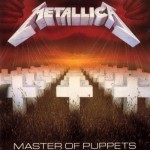 A controversial pick, Metallica’s excellent third album fulfills the incorporation of progressive themes but seems to crystallize them to such an extent that no more creative spark would emanate from their later works. Cliff Burton’s presence in the unit, and his bridging of neo-classicist influences into their progressive speed metal was a defining feature of what many hessians and metallers saw to be the main component of their excellence. Having let this seep in on ‘Kill Em All‘ and fully realise itself on ‘Ride The Lightning‘, ‘Master Of Puppets’ steps further towards punchier and anthemic songs, with a steeping emphasis on percussive, palm-muted rhythm riffs which are the dominant motif in the album’s musical execution. This is structurally still in the exact same mould as ‘Ride The Lightining’, in that despite a different order of where songs are, we get aggression in ‘Damage Inc.’ and ‘Battery’ where there was once ‘Fight Fire With Fire’ and ‘Trapped Under Ice’. Songs such as ‘Sanitarium’ continue a rock music inclined sense of songwriting that continues what started with ‘Fade To Black’ and inevitably foreshadows the growing commercialism of Metallica on later releases. The excellence of ‘Orion’ also signals a continuity shift that began with ‘Anesthesia (Pulling Teeth)’ and fulfilled itself with the ‘Call Of Ktulu’ instrumental. This is a great album that solidifies the importance of Metallica in the genre’s history, though the death of Cliff Burton and the lack of creative steam that ensued signalled the artistic decline that came in 1988 with ‘And Justice For All…’. –Pearson
A controversial pick, Metallica’s excellent third album fulfills the incorporation of progressive themes but seems to crystallize them to such an extent that no more creative spark would emanate from their later works. Cliff Burton’s presence in the unit, and his bridging of neo-classicist influences into their progressive speed metal was a defining feature of what many hessians and metallers saw to be the main component of their excellence. Having let this seep in on ‘Kill Em All‘ and fully realise itself on ‘Ride The Lightning‘, ‘Master Of Puppets’ steps further towards punchier and anthemic songs, with a steeping emphasis on percussive, palm-muted rhythm riffs which are the dominant motif in the album’s musical execution. This is structurally still in the exact same mould as ‘Ride The Lightining’, in that despite a different order of where songs are, we get aggression in ‘Damage Inc.’ and ‘Battery’ where there was once ‘Fight Fire With Fire’ and ‘Trapped Under Ice’. Songs such as ‘Sanitarium’ continue a rock music inclined sense of songwriting that continues what started with ‘Fade To Black’ and inevitably foreshadows the growing commercialism of Metallica on later releases. The excellence of ‘Orion’ also signals a continuity shift that began with ‘Anesthesia (Pulling Teeth)’ and fulfilled itself with the ‘Call Of Ktulu’ instrumental. This is a great album that solidifies the importance of Metallica in the genre’s history, though the death of Cliff Burton and the lack of creative steam that ensued signalled the artistic decline that came in 1988 with ‘And Justice For All…’. –Pearson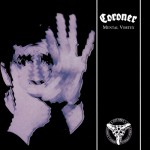 While the speed and thrash metal boom was crumbling all around in the wake of Seattle and LA-based clothing styles storming the nation, a few European stalwarts lingered on the fringes and while some of them didn’t dare to take up the arms for intricate, narrative death metal, they were influenced by its vicious aggression and psychedelic subject matter. Coroner from Zürich, around Tom G. Warrior‘s circle of the tyrants, never became a vastly recognized or influential name in extreme metal but superceded most of its peers in technicality and consistency, releasing a discography of five albums ranging from the raging “R.I.P.” to the eclectic “Grin“, where the fourth one “Mental Vortex” is where the playing abilities peak but the ultimate purpose of the band is starting to wane. When the idealism of youth fades and with it the spontaneous power of iconographic assault, the only avenue left for speed metal to challenge the moral preconceptions of hypocritical generations was to turn to psychology and explore lies and paranoia in the internal spheres, cutting up joy and sadness into fusion-esque rhythm riff salads (with the timing of an atomic clock) cut up from brilliant small pieces akin to Burroughs’ or Gysin’s style of literature. Such a hectic style provides an engaging rhythmic tension for this album, arguably one of the last triumphs of the entire genre, but it’s also cold and calculated like a scientific experiment. The vastly more popular but not much better Carcass realized essentially the same things many years later on their hit album “Heartwork” and ended up on the pages of guitar magazines, while Coroner was already entombed to the mausoleums of Noise Records’ speed metal roster. –Devamitra
While the speed and thrash metal boom was crumbling all around in the wake of Seattle and LA-based clothing styles storming the nation, a few European stalwarts lingered on the fringes and while some of them didn’t dare to take up the arms for intricate, narrative death metal, they were influenced by its vicious aggression and psychedelic subject matter. Coroner from Zürich, around Tom G. Warrior‘s circle of the tyrants, never became a vastly recognized or influential name in extreme metal but superceded most of its peers in technicality and consistency, releasing a discography of five albums ranging from the raging “R.I.P.” to the eclectic “Grin“, where the fourth one “Mental Vortex” is where the playing abilities peak but the ultimate purpose of the band is starting to wane. When the idealism of youth fades and with it the spontaneous power of iconographic assault, the only avenue left for speed metal to challenge the moral preconceptions of hypocritical generations was to turn to psychology and explore lies and paranoia in the internal spheres, cutting up joy and sadness into fusion-esque rhythm riff salads (with the timing of an atomic clock) cut up from brilliant small pieces akin to Burroughs’ or Gysin’s style of literature. Such a hectic style provides an engaging rhythmic tension for this album, arguably one of the last triumphs of the entire genre, but it’s also cold and calculated like a scientific experiment. The vastly more popular but not much better Carcass realized essentially the same things many years later on their hit album “Heartwork” and ended up on the pages of guitar magazines, while Coroner was already entombed to the mausoleums of Noise Records’ speed metal roster. –Devamitra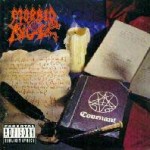 Among the most ancient, recognisable and influential cults in Death Metal’s history, Morbid Angel’s tale of decline is a prolonged one, and raised continuous questions about the band’s creative state, as though their instruments were being channelled purely at the whim of the Outer Gods. The Floridan giants finally resisted the unearthly impulses that once guided them to create powerful statements of occult awareness bound up with a Nietzschean sense of overcoming and will-to-power, such that with the releases of ‘Gateways of Annihilation’ and ‘Heretic’, the band fell victim to triviality. Incremental lapses in quality can be traced back to much earlier albums however, with the departure of guitarist Richard Brunelle being the first to impact the legendary line-up responsible for two of the finest Metal albums ever recorded, meaning that ‘Covenant’ would initiate the band’s slow decay. In addition, Morbid Angel’s growing populist tendencies were perhaps never more commercially viable than at this time, with the production left in the hands of Fleming Rasmussen, and not one but two music videos filmed to promote the album. Brunelle’s exit would mean that Trey Azagthoth would be fully responsible for filling the suffocating mix with his trademarked guitarwork, to the surprising detriment of ‘Covenant’s sound wherever the album’s conceptual direction becomes overwhelmed by a one-dimensional bluntness. Characterised by unfocused and uniform phrasing and only held in place by Pete Sandoval’s tightly militaristic drumming, the latter half of the album demonstrates little of the dynamism that could be heard on every one of their preceeding songs. The spiritual inversion of Morbid Angel, a transvaluation of religious language to re-vitalise and Paganise the path of transcendence and condemn the submissive and world-denying, corrupt parasites turns into an unaltering, blind rage that’s summarised by the lyric of ‘God of Emptiness‘, “So, what makes you supreme?”, setting a blueprint for the band to follow on ‘Domination‘ and the hordes of imitators that were given an undeserved license to record by virtue of Death Metal’s growing popularity. ‘Covenant’ in this sense is not dissimilar to Deicide’s Pyrrhic fall from the adept demonology of ‘Legion‘ to the dumbed-down ‘Once Upon the Cross‘, though Azagthoth’s wizardry would earn Morbid Angel some redemption with the primordial dance of cosmic energies to be heard on ‘Formulas Fatal to the Flesh‘ before finally digging their own grave without cursing their own reputation quite as badly as the truly shattered idols from the golden age of Death Metal. –ObscuraHessian
Among the most ancient, recognisable and influential cults in Death Metal’s history, Morbid Angel’s tale of decline is a prolonged one, and raised continuous questions about the band’s creative state, as though their instruments were being channelled purely at the whim of the Outer Gods. The Floridan giants finally resisted the unearthly impulses that once guided them to create powerful statements of occult awareness bound up with a Nietzschean sense of overcoming and will-to-power, such that with the releases of ‘Gateways of Annihilation’ and ‘Heretic’, the band fell victim to triviality. Incremental lapses in quality can be traced back to much earlier albums however, with the departure of guitarist Richard Brunelle being the first to impact the legendary line-up responsible for two of the finest Metal albums ever recorded, meaning that ‘Covenant’ would initiate the band’s slow decay. In addition, Morbid Angel’s growing populist tendencies were perhaps never more commercially viable than at this time, with the production left in the hands of Fleming Rasmussen, and not one but two music videos filmed to promote the album. Brunelle’s exit would mean that Trey Azagthoth would be fully responsible for filling the suffocating mix with his trademarked guitarwork, to the surprising detriment of ‘Covenant’s sound wherever the album’s conceptual direction becomes overwhelmed by a one-dimensional bluntness. Characterised by unfocused and uniform phrasing and only held in place by Pete Sandoval’s tightly militaristic drumming, the latter half of the album demonstrates little of the dynamism that could be heard on every one of their preceeding songs. The spiritual inversion of Morbid Angel, a transvaluation of religious language to re-vitalise and Paganise the path of transcendence and condemn the submissive and world-denying, corrupt parasites turns into an unaltering, blind rage that’s summarised by the lyric of ‘God of Emptiness‘, “So, what makes you supreme?”, setting a blueprint for the band to follow on ‘Domination‘ and the hordes of imitators that were given an undeserved license to record by virtue of Death Metal’s growing popularity. ‘Covenant’ in this sense is not dissimilar to Deicide’s Pyrrhic fall from the adept demonology of ‘Legion‘ to the dumbed-down ‘Once Upon the Cross‘, though Azagthoth’s wizardry would earn Morbid Angel some redemption with the primordial dance of cosmic energies to be heard on ‘Formulas Fatal to the Flesh‘ before finally digging their own grave without cursing their own reputation quite as badly as the truly shattered idols from the golden age of Death Metal. –ObscuraHessian
 Promised Land of Heavy Metal
Promised Land of Heavy Metal
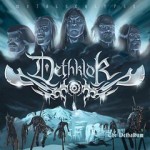
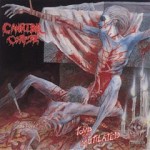

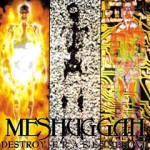
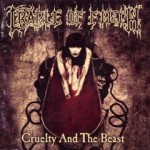
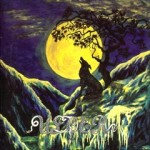
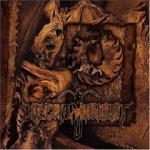
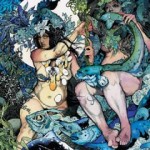
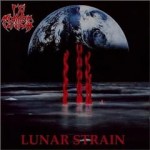
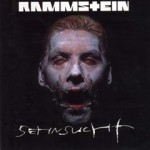
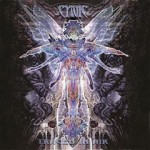


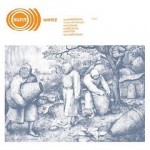
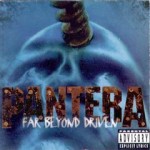
 We’re going to talk about the first band here, Fenriz’ Red Planet, because Nattefrost is forgettable 1970s punk rock dressed up as early 1980s black metal. This band is a hybrid between doom metal, 1970s heavy guitar jam, and what they call stoner doom now but was recognizable in St. Vitus, Pentagram and Sleep for many years. The production approach and song style is closest to 1970s heavy guitar rock, like Cream or even Led Zeppelin, in that songs are verse/chorus works with a big fat diversion stuck in the middle that may run through a couple of riffs but comes back into key and rhythm so the cycle can spin again. But over half of the riffs are straight out of old school 1980s doom metal, and that would be St. Vitus and Pentagram but also late-blooming NWOBHM with a doom edge like Witchfinder General and Budgie. It’s not exciting; if anything, it sounds like a demo where the band hasn’t yet finalized direction and aesthetic. However, it is good; these songs have character and a spirit to them which you cannot get anywhere else. You can hear a few lifts from Fenriz’ folk/metal project Storm and one or two similar themes to Darkthrone, but this CD doesn’t need to namedrop to stand on its own. They named it “Engangsgrill,” which apparently is a type of disposable barbecue, which fits exactly the kind of sloppy rock/metal hybrid you have here: pickup trucks headed to the country with a keg, a bong and some friends, followed by a weekend of the best neighborhood bands jamming, society gets forgotten until on Monday morning you drive back with a mouth full of ash and the kind of diluted hangover that comes from cheap beer in constant consumption.
We’re going to talk about the first band here, Fenriz’ Red Planet, because Nattefrost is forgettable 1970s punk rock dressed up as early 1980s black metal. This band is a hybrid between doom metal, 1970s heavy guitar jam, and what they call stoner doom now but was recognizable in St. Vitus, Pentagram and Sleep for many years. The production approach and song style is closest to 1970s heavy guitar rock, like Cream or even Led Zeppelin, in that songs are verse/chorus works with a big fat diversion stuck in the middle that may run through a couple of riffs but comes back into key and rhythm so the cycle can spin again. But over half of the riffs are straight out of old school 1980s doom metal, and that would be St. Vitus and Pentagram but also late-blooming NWOBHM with a doom edge like Witchfinder General and Budgie. It’s not exciting; if anything, it sounds like a demo where the band hasn’t yet finalized direction and aesthetic. However, it is good; these songs have character and a spirit to them which you cannot get anywhere else. You can hear a few lifts from Fenriz’ folk/metal project Storm and one or two similar themes to Darkthrone, but this CD doesn’t need to namedrop to stand on its own. They named it “Engangsgrill,” which apparently is a type of disposable barbecue, which fits exactly the kind of sloppy rock/metal hybrid you have here: pickup trucks headed to the country with a keg, a bong and some friends, followed by a weekend of the best neighborhood bands jamming, society gets forgotten until on Monday morning you drive back with a mouth full of ash and the kind of diluted hangover that comes from cheap beer in constant consumption. Oh neat, an emo/stoner metal hybrid with lots of indie and punk rock touches. If you can imagine Neurosis and Jawbreaker making sweet love with newer Sleep, and throwing in tons of stuff from the heavy metal and indie rock canons, you’ll have a good image of what this cheeseball release has to offer. From the way the labels and the big industry reviewers — who have about five minutes to hear each CD, and put them on in the background while socializing for two weeks, then forget about them — went on about this CD, you’d think it was the second coming of innovation itself. Instead, it’s stale and completely loses what’s good about metal and punk, converging on a mean that’s closer to your run-of-the-mill hipster band. This is awful.
Oh neat, an emo/stoner metal hybrid with lots of indie and punk rock touches. If you can imagine Neurosis and Jawbreaker making sweet love with newer Sleep, and throwing in tons of stuff from the heavy metal and indie rock canons, you’ll have a good image of what this cheeseball release has to offer. From the way the labels and the big industry reviewers — who have about five minutes to hear each CD, and put them on in the background while socializing for two weeks, then forget about them — went on about this CD, you’d think it was the second coming of innovation itself. Instead, it’s stale and completely loses what’s good about metal and punk, converging on a mean that’s closer to your run-of-the-mill hipster band. This is awful. This is what’s left of the band that made None So Vile? The neatly structured, compact death metal has been replaced with blasting metalcore. Metalcore, as you may know, is kind of a garbage plate for underground metal and punk. Based around the interpretation of technical metal into punk structures that Human Remains showed us, metalcore loves randomness in circular song structures, so you get ten minimally-related riffs linked by a breakdown and a few slow chants, and then the whole thing repeats, and then the song ends. It’s music for a fragmented mind and as a result, has the IQ of a headless chicken watching daytime TV. Cryptopsy utterly fails to make coherent music out of this style as their countrymen Neuraxis eventually did, and instead defecate this collection of random riffs based around an egodramatic vocal track. It’s total garbage for morons.
This is what’s left of the band that made None So Vile? The neatly structured, compact death metal has been replaced with blasting metalcore. Metalcore, as you may know, is kind of a garbage plate for underground metal and punk. Based around the interpretation of technical metal into punk structures that Human Remains showed us, metalcore loves randomness in circular song structures, so you get ten minimally-related riffs linked by a breakdown and a few slow chants, and then the whole thing repeats, and then the song ends. It’s music for a fragmented mind and as a result, has the IQ of a headless chicken watching daytime TV. Cryptopsy utterly fails to make coherent music out of this style as their countrymen Neuraxis eventually did, and instead defecate this collection of random riffs based around an egodramatic vocal track. It’s total garbage for morons. Imagine Iron Maiden doing a simplified version of 1990s Demigod or Amorphis. This CD is unique in that it successfully applies both (a) the old school death metal style and (b) a heavy metal, harmonized-guitar, bouncy riff style — and does it by coming up with a melodic phrase and answer, and using these to make layers of verse and chorus. Play riff; play notes of riff in variation of rhythm; harmonize guitars and repeat, then cycle. The choruses do the same. Nothing sounds out of place, and the deep guttural voice guides it along, but it seems entirely out of place when the heavy metal riffs and trills come into play. In addition, the riff salad of death metal isn’t here; like rock or indie, this rides one pattern for verse and one for chorus, and much variation is not to be found, which probably places this out of the range of old school death metal fans. Still, these are quality riffs and excellent use of basic harmony, which makes this easy listening and because it is not random, a great improvement on the metalcore-heavy stuff we hear daily. For albums like later Bolt Thrower, which tried to make a heavy metal/death metal hybrid, this is probably the best so far.
Imagine Iron Maiden doing a simplified version of 1990s Demigod or Amorphis. This CD is unique in that it successfully applies both (a) the old school death metal style and (b) a heavy metal, harmonized-guitar, bouncy riff style — and does it by coming up with a melodic phrase and answer, and using these to make layers of verse and chorus. Play riff; play notes of riff in variation of rhythm; harmonize guitars and repeat, then cycle. The choruses do the same. Nothing sounds out of place, and the deep guttural voice guides it along, but it seems entirely out of place when the heavy metal riffs and trills come into play. In addition, the riff salad of death metal isn’t here; like rock or indie, this rides one pattern for verse and one for chorus, and much variation is not to be found, which probably places this out of the range of old school death metal fans. Still, these are quality riffs and excellent use of basic harmony, which makes this easy listening and because it is not random, a great improvement on the metalcore-heavy stuff we hear daily. For albums like later Bolt Thrower, which tried to make a heavy metal/death metal hybrid, this is probably the best so far. Black metal was about writing unique melodies and building song structures to fit them. Vreid is about mimicking the past with more intensity in each riff, but relying on predictable melodic strips and linear song structures in circular repetition, resulting in songs that are binary like nu-metal: a softer part, then a harder part, then a response to that which softens the hardness, then a restatement at full blast, fade out and win. Most of these riffs come from the 1970s and 1980s generations of metal and get a “black metal” treatment, so end up sounding like rock music in its Sunday black metal evil clothes. The music is driving by a chanting vocal which rides the beat like the shouts of the drummer commanding the slaves to row. Every now and then they launch into an extended melody like a pentatonic version of early ancient, and they have the raw rhythmic power of an early Marduk or Zyklon, but it doesn’t add up to more than most rock music, and considerably less than the formative works of Nordic black metal.
Black metal was about writing unique melodies and building song structures to fit them. Vreid is about mimicking the past with more intensity in each riff, but relying on predictable melodic strips and linear song structures in circular repetition, resulting in songs that are binary like nu-metal: a softer part, then a harder part, then a response to that which softens the hardness, then a restatement at full blast, fade out and win. Most of these riffs come from the 1970s and 1980s generations of metal and get a “black metal” treatment, so end up sounding like rock music in its Sunday black metal evil clothes. The music is driving by a chanting vocal which rides the beat like the shouts of the drummer commanding the slaves to row. Every now and then they launch into an extended melody like a pentatonic version of early ancient, and they have the raw rhythmic power of an early Marduk or Zyklon, but it doesn’t add up to more than most rock music, and considerably less than the formative works of Nordic black metal. Throbbing notes rhythm a rhythm that then reverses, examines a portion of itself in detail, and then picks up in a new direction which dovetails with the old; the throb remains, like symbols etched in the air with a torch caught on the slower memory of film. In this way, Black Funeral achieves an odd ambience similar to that of Impetigo, where a higher note is strummed repetitively at an offset rhythm where most bands would hammer a lower note on the beat, but by the nature of the larger melodic structure of the riff, this throb does not bounce jauntily like a rock rhythm; it hangs, like a reminder of mortality. Vocals are chant-ish black metal rasps and the mechanistic pedaling of the drum machine fits this sound like a glove, getting further inhuman as it distances us from musical expectation and clean aesthetics. Like the humming beeps of an alien machine exploring the night, this album rediscovers humanity by removing it from the picture and showing us the empty space in which we must construct as inevitable death closes in. While most experts agree “Vampyr” is the height of this band — and who am I to disagree? — this perhaps less proficient album is more haunting and bizarre, yet fits it into a pattern similar to our reminiscences of isolated nights when the future angled away from us like the shadow of an unknown doorway.
Throbbing notes rhythm a rhythm that then reverses, examines a portion of itself in detail, and then picks up in a new direction which dovetails with the old; the throb remains, like symbols etched in the air with a torch caught on the slower memory of film. In this way, Black Funeral achieves an odd ambience similar to that of Impetigo, where a higher note is strummed repetitively at an offset rhythm where most bands would hammer a lower note on the beat, but by the nature of the larger melodic structure of the riff, this throb does not bounce jauntily like a rock rhythm; it hangs, like a reminder of mortality. Vocals are chant-ish black metal rasps and the mechanistic pedaling of the drum machine fits this sound like a glove, getting further inhuman as it distances us from musical expectation and clean aesthetics. Like the humming beeps of an alien machine exploring the night, this album rediscovers humanity by removing it from the picture and showing us the empty space in which we must construct as inevitable death closes in. While most experts agree “Vampyr” is the height of this band — and who am I to disagree? — this perhaps less proficient album is more haunting and bizarre, yet fits it into a pattern similar to our reminiscences of isolated nights when the future angled away from us like the shadow of an unknown doorway. If the recombinant album name and band name didn’t clue you in, here’s the skinny: this band is totally postmodern, meaning that they fit together all sorts of random influences and then link them together with the basics of rhythm and harmony. As a result, it’s like a fast ride at Disneyland: constant changing stimulus of radical difference so much that after a while you lose any idea of where you are, and end up thinking you’ve come very far, when at the very end as the buggy slows you realize you’ve been circling around the same relatively small space. Unlike most bands of this type, which I’m going to call crypto-metalcore because it’s (a) without death metal’s style of organization, preferring instead the hardcore method of having riffs have as little in common as possible and no narrative (b) of mixed riff styles and (c) depends on rhythmic buildup/breakdown for tension because you’re not going to get it in contrast between riffs, Decrepit Birth is good — it’s like an Iron Maiden album hidden in Deeds of Flesh with Blotted Science and Negativa offering critique. However, I can’t listen to this carnival music; it breaks down concentration and replaces it with elaborate versions of territory trod long ago.
If the recombinant album name and band name didn’t clue you in, here’s the skinny: this band is totally postmodern, meaning that they fit together all sorts of random influences and then link them together with the basics of rhythm and harmony. As a result, it’s like a fast ride at Disneyland: constant changing stimulus of radical difference so much that after a while you lose any idea of where you are, and end up thinking you’ve come very far, when at the very end as the buggy slows you realize you’ve been circling around the same relatively small space. Unlike most bands of this type, which I’m going to call crypto-metalcore because it’s (a) without death metal’s style of organization, preferring instead the hardcore method of having riffs have as little in common as possible and no narrative (b) of mixed riff styles and (c) depends on rhythmic buildup/breakdown for tension because you’re not going to get it in contrast between riffs, Decrepit Birth is good — it’s like an Iron Maiden album hidden in Deeds of Flesh with Blotted Science and Negativa offering critique. However, I can’t listen to this carnival music; it breaks down concentration and replaces it with elaborate versions of territory trod long ago. What happened here? Eight years ago — before old-school “revival” was even a blip on the radar — this band had the apparent potential to give proper life to archaic death metal form. Their first album/demo was a brooding, infectious and grimly cohesive piece of work, enough so to make this sound almost brazenly cheap by comparison. Toss in every imaginable death metal riff style coined between 1989 and 1993, lay them out on a rhythmic smorgasbord and put them through enough mood changes to make a pregnant teenager blush and you’ve come damn close to this; add enough embarassing Bloodbath-sounding material (listen to the opener) to something otherwise “authentic” and you’ll never want to hear “old school” again. – kontinual
What happened here? Eight years ago — before old-school “revival” was even a blip on the radar — this band had the apparent potential to give proper life to archaic death metal form. Their first album/demo was a brooding, infectious and grimly cohesive piece of work, enough so to make this sound almost brazenly cheap by comparison. Toss in every imaginable death metal riff style coined between 1989 and 1993, lay them out on a rhythmic smorgasbord and put them through enough mood changes to make a pregnant teenager blush and you’ve come damn close to this; add enough embarassing Bloodbath-sounding material (listen to the opener) to something otherwise “authentic” and you’ll never want to hear “old school” again. – kontinual There are some of us who believe that rock and roll music, instead of being a thing deliberately created, is an aggregate of what was left over when we tested everything else against a captive audience. Star Fucking Hipsters prove this by carefully absorbing everything they can into the great sponge of melancholy indie pop. These songs usually start off with fast punk or speed metal (Slayer) riffs, and then pass through a few exciting transitions borrowed from anything industrial, black and reggage or between, but then we get to the core: darkish, self-pitying, somewhat helpless indie pop. True, it’s in pop punk format like The Descendents meets Blink 182 with Jane’s Addiction advising on behalf of the emo CIA, but basically, it’s pop. And when we get to that point we see this album is like a confused and lonely person in the city, covering themselves with newspapers or whatever fashions they can yank out of the wind, hoping no one will ever get a glimpse inside. If that’s its goal, this is supreme art, but more likely it is the emoting of such people hoping we’ll justify their existence for them. As pop, it’s not bad, a little toward the “poignant” side of minor key melodies sliding into major key to give you a sense of hope. But it’s really the same old thing, or the latest incarnation of it in whatever styles have stuck over the past twelve years, and so I can’t imagine why you’d listen to this instead of any of the 100,000 other albums this “good” in the rock style.
There are some of us who believe that rock and roll music, instead of being a thing deliberately created, is an aggregate of what was left over when we tested everything else against a captive audience. Star Fucking Hipsters prove this by carefully absorbing everything they can into the great sponge of melancholy indie pop. These songs usually start off with fast punk or speed metal (Slayer) riffs, and then pass through a few exciting transitions borrowed from anything industrial, black and reggage or between, but then we get to the core: darkish, self-pitying, somewhat helpless indie pop. True, it’s in pop punk format like The Descendents meets Blink 182 with Jane’s Addiction advising on behalf of the emo CIA, but basically, it’s pop. And when we get to that point we see this album is like a confused and lonely person in the city, covering themselves with newspapers or whatever fashions they can yank out of the wind, hoping no one will ever get a glimpse inside. If that’s its goal, this is supreme art, but more likely it is the emoting of such people hoping we’ll justify their existence for them. As pop, it’s not bad, a little toward the “poignant” side of minor key melodies sliding into major key to give you a sense of hope. But it’s really the same old thing, or the latest incarnation of it in whatever styles have stuck over the past twelve years, and so I can’t imagine why you’d listen to this instead of any of the 100,000 other albums this “good” in the rock style. Funeral doom of a style similar to Skepticism if merged with Esoteric, with a tiny bit of Paradise Lost or Sleep in the wings, Ahab is a studied take on the slow and depressive atmospheric music that many people seem to enjoy. Stylistically, it is probably the most advanced of its kind; musically, it is perfectly competent; artistically, it is not particularly compelling. Its melodies have less of a sense of mixed emotions than do those of Skepticism, and its songs develop in predictable cycles within cycles, leaving us with atmosphere by default once all else has been blocked out. Like American rock bands, Ahab also has to throw in that sense of “contrast” where any dominant idea gets a contrarian voice thrown up against it, where bands like Skepticism bear down with enhancement and variation inside their major ideas. Few want to be the voice to stand up and say this, but most doom metal is boring, and not just because it’s slow. Ahab, while better than most, falls under this umbrella.
Funeral doom of a style similar to Skepticism if merged with Esoteric, with a tiny bit of Paradise Lost or Sleep in the wings, Ahab is a studied take on the slow and depressive atmospheric music that many people seem to enjoy. Stylistically, it is probably the most advanced of its kind; musically, it is perfectly competent; artistically, it is not particularly compelling. Its melodies have less of a sense of mixed emotions than do those of Skepticism, and its songs develop in predictable cycles within cycles, leaving us with atmosphere by default once all else has been blocked out. Like American rock bands, Ahab also has to throw in that sense of “contrast” where any dominant idea gets a contrarian voice thrown up against it, where bands like Skepticism bear down with enhancement and variation inside their major ideas. Few want to be the voice to stand up and say this, but most doom metal is boring, and not just because it’s slow. Ahab, while better than most, falls under this umbrella. Purists will kill me for this, but this is Biafra’s best work — it’s musical. Where the Dead Kennedys sounded disorganized and messy without really building on that as an aesthetic, he’s slowed down to a pop-punk combo that uses hardcore riffs (Discharge, Exploited) to balance its melodic lead picking (Circle Jerks, The Plugz). That, plus Southern Fried guitar solos and lead guitar noise, forms the underpinning for a more interesting Biafra performance than has ever been heard before. On this CD, Biafra develops his vocal lines both melodically and in timbre, giving the performance of his life with verve and energy. You’ve heard these riff types before, and many of the note progressions are “pop culture” stalwarts that show up in movie soundtracks and commercials, but here Biafra and his band develop each into a song that’s half-rock and half-hardcore, creating a foundation that will introduce a new generation to the sounds of hardcore punk.
Purists will kill me for this, but this is Biafra’s best work — it’s musical. Where the Dead Kennedys sounded disorganized and messy without really building on that as an aesthetic, he’s slowed down to a pop-punk combo that uses hardcore riffs (Discharge, Exploited) to balance its melodic lead picking (Circle Jerks, The Plugz). That, plus Southern Fried guitar solos and lead guitar noise, forms the underpinning for a more interesting Biafra performance than has ever been heard before. On this CD, Biafra develops his vocal lines both melodically and in timbre, giving the performance of his life with verve and energy. You’ve heard these riff types before, and many of the note progressions are “pop culture” stalwarts that show up in movie soundtracks and commercials, but here Biafra and his band develop each into a song that’s half-rock and half-hardcore, creating a foundation that will introduce a new generation to the sounds of hardcore punk. Most of us love the idea of black metal: a few totally socially alienated people, armed only with the truth, pick up guitars one weekend and make a simple mind-virus that helps slay all of the vastly powerful illusions that make our modern world miserable. The problem is that this is far from the truth: most of the people who have made great simple black metal were expert players or at least savants who self-schooled themselves in a unique and powerful style, and their work is very deliberate and designed to make us enjoy life as much as convey some idea. But as in all things, each generation picks up where the previous generation appeared to leave off, so the source of the idea is always lost. Akitsa sounds like a cross between The Exploited and early Dark Funeral, with simple melodic riffs offset against sawing basic power chording; the melodic riffs are too candy-sweet and the power chord riffs are too much of a style we can get anywhere. “Silence” appears to be heavily influenced by “Thy Winter Kingdom” from the first Behemoth CD. The rest of the CD is alternating Burzum influences with later model droning melody. It is both not bad and not really compelling enough to want to hear again.
Most of us love the idea of black metal: a few totally socially alienated people, armed only with the truth, pick up guitars one weekend and make a simple mind-virus that helps slay all of the vastly powerful illusions that make our modern world miserable. The problem is that this is far from the truth: most of the people who have made great simple black metal were expert players or at least savants who self-schooled themselves in a unique and powerful style, and their work is very deliberate and designed to make us enjoy life as much as convey some idea. But as in all things, each generation picks up where the previous generation appeared to leave off, so the source of the idea is always lost. Akitsa sounds like a cross between The Exploited and early Dark Funeral, with simple melodic riffs offset against sawing basic power chording; the melodic riffs are too candy-sweet and the power chord riffs are too much of a style we can get anywhere. “Silence” appears to be heavily influenced by “Thy Winter Kingdom” from the first Behemoth CD. The rest of the CD is alternating Burzum influences with later model droning melody. It is both not bad and not really compelling enough to want to hear again. I wish this album were a joke, but like most modern and postmodern art, it’s an attempt to “demonstrate” an “idea,” and that idea has no correlation to the reality of an artist both entertaining and informing his listeners. Instead, you get a lot of fast chromatic playing over serial drumming with occasional breaks into jazz-style breakdowns that are either sloppy or misinformed about music theory. The result is a dissonant atmosphere after the band lulls you into contentment with repetition. Over time, the basic pattern increases in a period-doubling format, creating a linear expansion on a basic idea that resembles holy books that write about the universe expanding from a breath, except here the expansion leads to nothing but a reflection of itself. When Burzum did this with Det Som Engang Var, it built a mood that gained resurgent power of time; here it is purely deconstructive and fragments the listener’s attention span by forcing it through a narrow slit of musical awareness. People will like this because it’s unique, and talk about how genius it is because no one else “dared to be different” to such a degree, but as a work of meaningful art and a listening experience, it is worthless.
I wish this album were a joke, but like most modern and postmodern art, it’s an attempt to “demonstrate” an “idea,” and that idea has no correlation to the reality of an artist both entertaining and informing his listeners. Instead, you get a lot of fast chromatic playing over serial drumming with occasional breaks into jazz-style breakdowns that are either sloppy or misinformed about music theory. The result is a dissonant atmosphere after the band lulls you into contentment with repetition. Over time, the basic pattern increases in a period-doubling format, creating a linear expansion on a basic idea that resembles holy books that write about the universe expanding from a breath, except here the expansion leads to nothing but a reflection of itself. When Burzum did this with Det Som Engang Var, it built a mood that gained resurgent power of time; here it is purely deconstructive and fragments the listener’s attention span by forcing it through a narrow slit of musical awareness. People will like this because it’s unique, and talk about how genius it is because no one else “dared to be different” to such a degree, but as a work of meaningful art and a listening experience, it is worthless. This band claims “active” status in the early nineties, with zero material to show for it. It may very well be true; current personnel have some of the more run-of-the-mill Stockholm bands to brag about in their ancestry. Excited yet? This falls somewhere between Amon Amarth and Dismember’s Massive Killing Capacity, smothered in the “soft” mimicry of the Sunlight sound that seems so common for these fence-sitting bands. The plod is painful and simple and the song development as bluntly screwball as the song titles, lending an air of crafted irony to the whole presentation lest somebody seriously stack it up against any of its predecessors. One wonders whence this stuff keeps coming — I’m wont to call this the “Swedish mid-life crisis” and leave it at that. – kontinual
This band claims “active” status in the early nineties, with zero material to show for it. It may very well be true; current personnel have some of the more run-of-the-mill Stockholm bands to brag about in their ancestry. Excited yet? This falls somewhere between Amon Amarth and Dismember’s Massive Killing Capacity, smothered in the “soft” mimicry of the Sunlight sound that seems so common for these fence-sitting bands. The plod is painful and simple and the song development as bluntly screwball as the song titles, lending an air of crafted irony to the whole presentation lest somebody seriously stack it up against any of its predecessors. One wonders whence this stuff keeps coming — I’m wont to call this the “Swedish mid-life crisis” and leave it at that. – kontinual What is post-rock? For most, it’s slow atmospheric rock beats with emo, punk, indie and noise riffs slowed down to provide texture. On this CD, Junius blend in a modern taste of the ancient with a Dead Can Dance influence. The result is like a river, winding around obstacles to rejoin itself, but only suggesting a topography. This music is comforting and melancholic, but not really exciting. It is pretty, but will find it hard to escape a lukewarm rock underpinning that reigns in its tendencies to escape for the outer limits. A reasonable comparison might be if Danzig decided to do a space rock album: you can appreciate it aesthetically, but sense how the voice isn’t really there, and how as much as these guys want to be ancient, they’re stuck in a modern paradigm.
What is post-rock? For most, it’s slow atmospheric rock beats with emo, punk, indie and noise riffs slowed down to provide texture. On this CD, Junius blend in a modern taste of the ancient with a Dead Can Dance influence. The result is like a river, winding around obstacles to rejoin itself, but only suggesting a topography. This music is comforting and melancholic, but not really exciting. It is pretty, but will find it hard to escape a lukewarm rock underpinning that reigns in its tendencies to escape for the outer limits. A reasonable comparison might be if Danzig decided to do a space rock album: you can appreciate it aesthetically, but sense how the voice isn’t really there, and how as much as these guys want to be ancient, they’re stuck in a modern paradigm. For the last time: if I wanted indie rock, I would have gone to a different part of the record store. Take your Sisters of Mercy gothic vocals, your bad indie rock open chord guitar riffs, and your basic song structures interrupted by dramatic outbursts, and put them there. I don’t want to fall into the old trap of saying “this isn’t metal,” because what I really want to say is that this is indie rock and should be integrated into that genre for the modicum of black metal stylings and ideas it still possesses. Sure, they’re going to call it a “post-rock” influence, but other than a little flexibility of rhythm, what’s going on here is the same stuff emo, indie and shoegaze bands were pumping out in the early 1990s.
For the last time: if I wanted indie rock, I would have gone to a different part of the record store. Take your Sisters of Mercy gothic vocals, your bad indie rock open chord guitar riffs, and your basic song structures interrupted by dramatic outbursts, and put them there. I don’t want to fall into the old trap of saying “this isn’t metal,” because what I really want to say is that this is indie rock and should be integrated into that genre for the modicum of black metal stylings and ideas it still possesses. Sure, they’re going to call it a “post-rock” influence, but other than a little flexibility of rhythm, what’s going on here is the same stuff emo, indie and shoegaze bands were pumping out in the early 1990s. This CD resembles death metal in no way other than the vocals, which are the kind of reverbed whisper shout that made the first Sepultura EP so memorable. But the music… well, it’s stranded in the 1980s. Throw a lot of Metallica, Kreator, Slayer and Destruction in a blender — like every other band from that era — and you’ll get this mismash of riffs very similar to both the aforementioned bands and a huge heritage of heavy metal. To their credit, this band string them together well rhythmically but otherwise seem entirely random. Before someone convinces you this is a forgotten classic, ask them if classic means “good” or just that it was around in the early 1990s.
This CD resembles death metal in no way other than the vocals, which are the kind of reverbed whisper shout that made the first Sepultura EP so memorable. But the music… well, it’s stranded in the 1980s. Throw a lot of Metallica, Kreator, Slayer and Destruction in a blender — like every other band from that era — and you’ll get this mismash of riffs very similar to both the aforementioned bands and a huge heritage of heavy metal. To their credit, this band string them together well rhythmically but otherwise seem entirely random. Before someone convinces you this is a forgotten classic, ask them if classic means “good” or just that it was around in the early 1990s. We all want to love anything with the enigmatic Nocturno Culto on it. In fact, many of us were hoping he would pull off a Nemesis Divina where his skills converted an unexceptional band into a relative masterpiece. Not so on Sarke — his performance is phoned in, mainly because these songs are sparse, undeveloped, and entirely derivative of their influences in a 1989 way. In fact, the whole CD has the vibe of a collection of songs that have been kicked around since they got written in the 1980s, finally put onto vinyl years after the genre has passed them by. You’re familiar with these chord progressions and general rhythms, since many of them come out of punk rock and hard rock, and you’re probably not unacquainted — unless you’ve been under a rock labeled BLACK METAL GO HOME for the last two decades — with Culto’s interpretation of them. It’s all quite vanilla; nothing to really be appalled at here except how little you care about this flat regurgitation of the past.
We all want to love anything with the enigmatic Nocturno Culto on it. In fact, many of us were hoping he would pull off a Nemesis Divina where his skills converted an unexceptional band into a relative masterpiece. Not so on Sarke — his performance is phoned in, mainly because these songs are sparse, undeveloped, and entirely derivative of their influences in a 1989 way. In fact, the whole CD has the vibe of a collection of songs that have been kicked around since they got written in the 1980s, finally put onto vinyl years after the genre has passed them by. You’re familiar with these chord progressions and general rhythms, since many of them come out of punk rock and hard rock, and you’re probably not unacquainted — unless you’ve been under a rock labeled BLACK METAL GO HOME for the last two decades — with Culto’s interpretation of them. It’s all quite vanilla; nothing to really be appalled at here except how little you care about this flat regurgitation of the past. We live in a time of fools. Given no real truths to chew on, they raise themselves on lies, and make competing lies so they can be heard. Then they tell us what metal bands to listen to, and they cannot tell the difference between good music and derivative shit. They will, for example, convince themselves that Drautran is folk metal, when really it’s indie rock songs dressed up in black metal chord forms with a little extra violence. Unlike metal songs, where riffs fit together and make sense, these are rock songs with some metal riffs dropped in between the sing-song verse chorus. They take their riffing inspiration from Enslaved’s Frost but none of the compositional coherence is here. Listen to this if you want to distract yourself, fragment your concentration and dull your possibilities of ever understanding the difference between good music and crap.
We live in a time of fools. Given no real truths to chew on, they raise themselves on lies, and make competing lies so they can be heard. Then they tell us what metal bands to listen to, and they cannot tell the difference between good music and derivative shit. They will, for example, convince themselves that Drautran is folk metal, when really it’s indie rock songs dressed up in black metal chord forms with a little extra violence. Unlike metal songs, where riffs fit together and make sense, these are rock songs with some metal riffs dropped in between the sing-song verse chorus. They take their riffing inspiration from Enslaved’s Frost but none of the compositional coherence is here. Listen to this if you want to distract yourself, fragment your concentration and dull your possibilities of ever understanding the difference between good music and crap. Every now and then, people who lack direction in life and so pay attention to surface features more than anything else, hoping to use these to justify their emptiness, will try to tell you how good a band is because it’s unique and nuanced. Usually this includes some kind of infantilism, like extreme minimalism or incoherence. This tedious little recording fits the bill. People like it because it’s obscure, kvlt, whatever… the truth is that it’s melodically simplistic, goes nowhere in song development, and showcases no really unique ability except to waste your time. They try to eat up as much tape as possible with intros, chants, and very basic keyboard melodies, but basically there’s nothing here. Maybe that’s the artistic point — emptiness — but then again a blank tape would have been more effective, and pleasant.
Every now and then, people who lack direction in life and so pay attention to surface features more than anything else, hoping to use these to justify their emptiness, will try to tell you how good a band is because it’s unique and nuanced. Usually this includes some kind of infantilism, like extreme minimalism or incoherence. This tedious little recording fits the bill. People like it because it’s obscure, kvlt, whatever… the truth is that it’s melodically simplistic, goes nowhere in song development, and showcases no really unique ability except to waste your time. They try to eat up as much tape as possible with intros, chants, and very basic keyboard melodies, but basically there’s nothing here. Maybe that’s the artistic point — emptiness — but then again a blank tape would have been more effective, and pleasant. Interesting approach by this Mexican band: take a more technical version of the full speed burst style semi-melodic black metal that Sarcofago made, and intersperse it with flowing keyboard-enhanced choruses in the style of countrymen Xibalba and Avzhia. The result suffers from the radical shift between two very identifiable poles, but the music although very basic develops gently through this style, and as a result is more credible than most of what we get sent here at the Dark Legions Archive Metal Reviews and CD Recycling Center. This is a band worth keeping an eye on.
Interesting approach by this Mexican band: take a more technical version of the full speed burst style semi-melodic black metal that Sarcofago made, and intersperse it with flowing keyboard-enhanced choruses in the style of countrymen Xibalba and Avzhia. The result suffers from the radical shift between two very identifiable poles, but the music although very basic develops gently through this style, and as a result is more credible than most of what we get sent here at the Dark Legions Archive Metal Reviews and CD Recycling Center. This is a band worth keeping an eye on. I’m convinced that a lot of contemporary death and black metal is music designed for children, because not only is it painfully simple and repetitive, but it also uses gentle rhythms of chord change — while playing at top speed. It’s like listening to a fan slowly playing an early Mozart piece. This album is similar. Sounds a lot like Blasphemy meets Impaled Nazarene, with the lower register production and slamming tempo changes of Belial. So as a retrospective of Finnish metal technique it’s great, but for anything else, it’s kind of a droning lullaby. What excuses it is that this CD shows purpose in its songwriting, and captures a mood, but for many of us the droning outweighs its significance.
I’m convinced that a lot of contemporary death and black metal is music designed for children, because not only is it painfully simple and repetitive, but it also uses gentle rhythms of chord change — while playing at top speed. It’s like listening to a fan slowly playing an early Mozart piece. This album is similar. Sounds a lot like Blasphemy meets Impaled Nazarene, with the lower register production and slamming tempo changes of Belial. So as a retrospective of Finnish metal technique it’s great, but for anything else, it’s kind of a droning lullaby. What excuses it is that this CD shows purpose in its songwriting, and captures a mood, but for many of us the droning outweighs its significance. During the past two years, underground black metal shifted from emulating the early 1990s — fast melody — to emulating the late 1990s, specifically Demoncy’s “Joined in Darkness.” The Convocation EP does its best to revive that sound, with an injection of Finnish death metal and possibly American doom/death like Incantation, Winter and Infester. Although it keeps its goals limited, which is appropriate for a demo, this release shows promise in songwriting in that (a) every piece works together (b) together they create a vision of some idea, experience or emotion we can recognize from life itself and (c) while a good deal of it covers known death metal archetypes, it does so without borrowing straight from one source and so gives us a sense of exploring these ideas from a new angle. Low rasp voices, downtuned rigid guitars, and drumming that sounds like it’s straight out of drone/hardcore punk fusion gives this CD a sense of growing out of the past toward something even more ancient.
During the past two years, underground black metal shifted from emulating the early 1990s — fast melody — to emulating the late 1990s, specifically Demoncy’s “Joined in Darkness.” The Convocation EP does its best to revive that sound, with an injection of Finnish death metal and possibly American doom/death like Incantation, Winter and Infester. Although it keeps its goals limited, which is appropriate for a demo, this release shows promise in songwriting in that (a) every piece works together (b) together they create a vision of some idea, experience or emotion we can recognize from life itself and (c) while a good deal of it covers known death metal archetypes, it does so without borrowing straight from one source and so gives us a sense of exploring these ideas from a new angle. Low rasp voices, downtuned rigid guitars, and drumming that sounds like it’s straight out of drone/hardcore punk fusion gives this CD a sense of growing out of the past toward something even more ancient.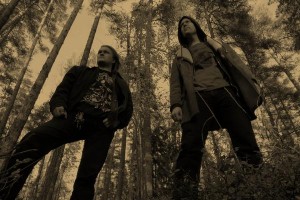 1.
1. 
 Out of the silence and the cold of wintry nights arose wolven howls, bestial growls and the electric screech of demoniac strings. Clandestine groups scattered across the lake-adorned strip of land which was too vast in area for the people to be in constant touch except by phone and letter, took to the newest musical movement to inherit the throne of the kings of headbanging and thrash: grindcore. Xysma from Turku played Carcass inspired devolved bursts of groovy noise with the mechanical straightforward approach upon which Finnish industrial corporations later built their reputation.
Out of the silence and the cold of wintry nights arose wolven howls, bestial growls and the electric screech of demoniac strings. Clandestine groups scattered across the lake-adorned strip of land which was too vast in area for the people to be in constant touch except by phone and letter, took to the newest musical movement to inherit the throne of the kings of headbanging and thrash: grindcore. Xysma from Turku played Carcass inspired devolved bursts of groovy noise with the mechanical straightforward approach upon which Finnish industrial corporations later built their reputation. Jalas: I can agree on that this was the strongest period for the music and most of it died in the mid 1990′s when Black Metal music “took over” the underground. For me it is still a bit hard to analyze all this. I have always listened to what I want and when I want. I’m not saying that I didn’t have Black Metal seasons, but bands like Slayer and Morbid Angel were always there, lurking behind (both in my record player and as recording artists).
Jalas: I can agree on that this was the strongest period for the music and most of it died in the mid 1990′s when Black Metal music “took over” the underground. For me it is still a bit hard to analyze all this. I have always listened to what I want and when I want. I’m not saying that I didn’t have Black Metal seasons, but bands like Slayer and Morbid Angel were always there, lurking behind (both in my record player and as recording artists). Not many of the original Death Metal fans were enthusiastic about Children of Bodom’s sappy power metal infiltration of Gothenburg techniques or Rotten Sound’s mechanical drum clinic grindcore. Nevertheless, the next generation of longhairs were inspired by these bands who had mastered the latest techniques of production perfect for a violently loud catharsis in car stereo or as a video game soundtrack. It was escapist, but not the Yuggothian dreams of a Demigod. In this case, influenced by groove metal and speed metal, commercial Death Metal sought to act as a youth counselor, harnessing hate and psychotic religion into the individualism of I don’t give a fuck and the various related ethical systems of liberalism.
Not many of the original Death Metal fans were enthusiastic about Children of Bodom’s sappy power metal infiltration of Gothenburg techniques or Rotten Sound’s mechanical drum clinic grindcore. Nevertheless, the next generation of longhairs were inspired by these bands who had mastered the latest techniques of production perfect for a violently loud catharsis in car stereo or as a video game soundtrack. It was escapist, but not the Yuggothian dreams of a Demigod. In this case, influenced by groove metal and speed metal, commercial Death Metal sought to act as a youth counselor, harnessing hate and psychotic religion into the individualism of I don’t give a fuck and the various related ethical systems of liberalism. The veteran Death Metallers from Olari practiced and mastered their Scandinavia influenced art for 15 years before their first release on a label, the impressive “Architecture of the Dead” EP featuring older compositions. While this unique band seemed to receive very little promotion, disciples prayed for the day of reckoning when this constellation could bestow their malevolence in full force upon the wretched scene. The long, exhausting spell “Swallowed by the Void” was to be the definitive answer to these inquiries. Sluggish, conjuring and micro-melodic abyss anthems pay unyielding tribute to the likes of Dismember and Grotesque, aiming for an evil glory that betrays the way death metal lost the innocent meddling in dark arts prevalent in the late 80’s and discovered serious ideologies by the force of contamination and crossbreeding with Black Metal. Especially the progressive moods of the deadly closing track “Bringer of Desolation”, reminiscent of the Lovecraftian horror pathos of the longer tracks by Nile deserves an inclusion in the Death Metal canon of the decade. Serious catacomb dwelling fans of Repugnant and Necros Christos will feel completely at home with Lie in Ruins’ atmospheric, sacral method of composition which eschews fast and classical parts, but returns to the Sabbath-ian roots of primal death doom experience.
The veteran Death Metallers from Olari practiced and mastered their Scandinavia influenced art for 15 years before their first release on a label, the impressive “Architecture of the Dead” EP featuring older compositions. While this unique band seemed to receive very little promotion, disciples prayed for the day of reckoning when this constellation could bestow their malevolence in full force upon the wretched scene. The long, exhausting spell “Swallowed by the Void” was to be the definitive answer to these inquiries. Sluggish, conjuring and micro-melodic abyss anthems pay unyielding tribute to the likes of Dismember and Grotesque, aiming for an evil glory that betrays the way death metal lost the innocent meddling in dark arts prevalent in the late 80’s and discovered serious ideologies by the force of contamination and crossbreeding with Black Metal. Especially the progressive moods of the deadly closing track “Bringer of Desolation”, reminiscent of the Lovecraftian horror pathos of the longer tracks by Nile deserves an inclusion in the Death Metal canon of the decade. Serious catacomb dwelling fans of Repugnant and Necros Christos will feel completely at home with Lie in Ruins’ atmospheric, sacral method of composition which eschews fast and classical parts, but returns to the Sabbath-ian roots of primal death doom experience. One of the most anti-social and least compromising commando squads from Finland in any musical genre, Devilry’s series of EP’s cumulated during the decade into an impressive demonstration of technical and lyrical ability that converted hordes of Black Metal listeners into old school Death Metal and vicious thrash. Like a less confused “The Laws of Scourge” era Sarcofago, Devilry abstains from long buildups to frame scenes of street violence and political upheaval in robotically symmetric percussion and inhuman, precise, spouting syllables of learned rhetoric. One of the fastest Finnish metal bands, at least in overall impression, Devilry quotes Slayer for a reductionist but holistic approach to songwriting which means that each song is built from a clearly defined set of riffs arranged to unleash the most powerful experience of intensity on the listener, while Sir Holm’s text praises the law and order of a reich that would be built according to the code of the warrior and rule of the naturally supreme. Essays could be written about Devilry’s interest in beauty, as despite the feral character of the music all songs are geometrical complexes with no loose parts hanging and even the cover picture is a serene, celestial scene incorporating Finnish functionalist architecture. Even the condemnation and hate that hangs as an eternal cloud upon the political rants of Devilry, are mostly posed as arguments of: what is not beautiful, does not deserve to be upheld, not even tolerated.
One of the most anti-social and least compromising commando squads from Finland in any musical genre, Devilry’s series of EP’s cumulated during the decade into an impressive demonstration of technical and lyrical ability that converted hordes of Black Metal listeners into old school Death Metal and vicious thrash. Like a less confused “The Laws of Scourge” era Sarcofago, Devilry abstains from long buildups to frame scenes of street violence and political upheaval in robotically symmetric percussion and inhuman, precise, spouting syllables of learned rhetoric. One of the fastest Finnish metal bands, at least in overall impression, Devilry quotes Slayer for a reductionist but holistic approach to songwriting which means that each song is built from a clearly defined set of riffs arranged to unleash the most powerful experience of intensity on the listener, while Sir Holm’s text praises the law and order of a reich that would be built according to the code of the warrior and rule of the naturally supreme. Essays could be written about Devilry’s interest in beauty, as despite the feral character of the music all songs are geometrical complexes with no loose parts hanging and even the cover picture is a serene, celestial scene incorporating Finnish functionalist architecture. Even the condemnation and hate that hangs as an eternal cloud upon the political rants of Devilry, are mostly posed as arguments of: what is not beautiful, does not deserve to be upheld, not even tolerated. Slugathor is already a veteran of “new” Finnish Death Metal, having debuted in 2000 with the “Delicacies of the Cadaver” EP right when everyone else was concentrating in elitist Black Metal fantasies. The morbid, dirty, ugly and non-theatrical submersion to grinding but dimensional grave exhumations was initially scorned upon but eventually they even signed to one of the premier Black Metal labels of the world, Drakkar Records from France. By the time of the third album “Echoes from Beneath” Slugathor knows exactly how to manipulate intensity and the listening experience of both black and Death Metal listeners, opening cavernous vaults and passages through warped holes in time and space using mostly foreboding rhythm guitar chugging of patterns familiar from since the dawn of Death Metal, ethereal melodic background leads by Tommi Grönqvist and evil vocals by Axu Laakso that borrow technique from both Deicide and Demilich without sounding as extreme as them. Like Bolt Thrower, this band is all about heaviness, ambience and symmetry while all “display” type of elements of technical Death Metal are kept to a minimum. A special mention goes to Ilmari Jalas’ drum technique which borrows heavily from Doom Metal in building up groove to a climax where dynamics emphasize the rhythm riff so that the only possibility is to headbang convulsively.
Slugathor is already a veteran of “new” Finnish Death Metal, having debuted in 2000 with the “Delicacies of the Cadaver” EP right when everyone else was concentrating in elitist Black Metal fantasies. The morbid, dirty, ugly and non-theatrical submersion to grinding but dimensional grave exhumations was initially scorned upon but eventually they even signed to one of the premier Black Metal labels of the world, Drakkar Records from France. By the time of the third album “Echoes from Beneath” Slugathor knows exactly how to manipulate intensity and the listening experience of both black and Death Metal listeners, opening cavernous vaults and passages through warped holes in time and space using mostly foreboding rhythm guitar chugging of patterns familiar from since the dawn of Death Metal, ethereal melodic background leads by Tommi Grönqvist and evil vocals by Axu Laakso that borrow technique from both Deicide and Demilich without sounding as extreme as them. Like Bolt Thrower, this band is all about heaviness, ambience and symmetry while all “display” type of elements of technical Death Metal are kept to a minimum. A special mention goes to Ilmari Jalas’ drum technique which borrows heavily from Doom Metal in building up groove to a climax where dynamics emphasize the rhythm riff so that the only possibility is to headbang convulsively. Jalas: Bolt Thrower influenced Slugathor really strongly in the beginning and always. Some people compare Slugathor also to bands like Asphyx or Obituary, but I would say that these influences are only minor and definitely more inspiration has flown, when we listened to bands such as Demigod, old Amorphis, Grave, Incantation and old Mortician. Definitely Morbid Angel also, but this was not heard so well on our music very much, I think. Also some bands, like Kaamos and Necros Christos at least influenced me in a way, because they had such unique concepts and ultimate feeling of death. Some more obscure names pop up to my mind, such as Bloody Gore (Indonesia), Darklord (Australia), all female band Mythic and so on. You know, it was all these 7″EP and demos we listened at the time besides full-length albums. Even demo-material of Dying Fetus, which could be a shock (?) to some because of their nowadays political message. But that band was brutal as hell when we first heard them. Also they were lyrically more into mutilation, etc. back then. Maybe we got into that because of teenage enthusiasm, but for some reason all this stuff still has very special place in our hearts, because they developed us to become what we are now.
Jalas: Bolt Thrower influenced Slugathor really strongly in the beginning and always. Some people compare Slugathor also to bands like Asphyx or Obituary, but I would say that these influences are only minor and definitely more inspiration has flown, when we listened to bands such as Demigod, old Amorphis, Grave, Incantation and old Mortician. Definitely Morbid Angel also, but this was not heard so well on our music very much, I think. Also some bands, like Kaamos and Necros Christos at least influenced me in a way, because they had such unique concepts and ultimate feeling of death. Some more obscure names pop up to my mind, such as Bloody Gore (Indonesia), Darklord (Australia), all female band Mythic and so on. You know, it was all these 7″EP and demos we listened at the time besides full-length albums. Even demo-material of Dying Fetus, which could be a shock (?) to some because of their nowadays political message. But that band was brutal as hell when we first heard them. Also they were lyrically more into mutilation, etc. back then. Maybe we got into that because of teenage enthusiasm, but for some reason all this stuff still has very special place in our hearts, because they developed us to become what we are now. Primitive but astoundingly direct, Deathspawned Destroyer from Huittinen (home of Vordven) has with their two full lengths established Finnish parallels to grindcore influenced bands such as Blood and even Blasphemy but remained widely unnoticed because of a lack of pretension and promotion. While “The First Bestial Butchery” album indulged in gore fantasies of Finnish rural winter madness, “WarBloodMassacre” logically continues to explore real world horrors that happened within the same fields and woods we inhabit here. The shades and violent ghosts of Finnish war history 1939-1945 are not haunted, prophetic or wise in the nearly brainless, stomach churning vision of Deathspawned Destroyer. This is music and lyric of the gut, the trenches and the perpetual dirt. It is Bolt Thrower if it was created by boozing Finnish woodsmen instead of punk influenced British soccer fans. The riffs would probably tell their story as well to men who lived 10,000 years ago, provided they were fighters with hate for the scourge of slavery and love for their home woodlands. The slower parts approximate the atmospheres of Amebix brand of ethereal hardcore. The band gets a chance to try its hand at epic length composition with the more than 10 minute “Doom Before Death” and why the simplicity of structure may make progressive listeners cringe, there is hardly a criticism to be made about the way the parts are elaborated by the cruel lyrics that detail the sufferings of a prisoner of war under torture. The relentless forward driving rhythm and ghoulish voice of the band might be borrowed from the old school, but the vicious, nearly cartoonish black-and-white history flashback is something that needs to be heard to be believed.
Primitive but astoundingly direct, Deathspawned Destroyer from Huittinen (home of Vordven) has with their two full lengths established Finnish parallels to grindcore influenced bands such as Blood and even Blasphemy but remained widely unnoticed because of a lack of pretension and promotion. While “The First Bestial Butchery” album indulged in gore fantasies of Finnish rural winter madness, “WarBloodMassacre” logically continues to explore real world horrors that happened within the same fields and woods we inhabit here. The shades and violent ghosts of Finnish war history 1939-1945 are not haunted, prophetic or wise in the nearly brainless, stomach churning vision of Deathspawned Destroyer. This is music and lyric of the gut, the trenches and the perpetual dirt. It is Bolt Thrower if it was created by boozing Finnish woodsmen instead of punk influenced British soccer fans. The riffs would probably tell their story as well to men who lived 10,000 years ago, provided they were fighters with hate for the scourge of slavery and love for their home woodlands. The slower parts approximate the atmospheres of Amebix brand of ethereal hardcore. The band gets a chance to try its hand at epic length composition with the more than 10 minute “Doom Before Death” and why the simplicity of structure may make progressive listeners cringe, there is hardly a criticism to be made about the way the parts are elaborated by the cruel lyrics that detail the sufferings of a prisoner of war under torture. The relentless forward driving rhythm and ghoulish voice of the band might be borrowed from the old school, but the vicious, nearly cartoonish black-and-white history flashback is something that needs to be heard to be believed. Tuomas K.: Lie in Ruins is conceptually 100% dealing with death, darkness and all things related. After all, this is Death Metal, so the lyrics and the imagery definitely should reflect that.
Tuomas K.: Lie in Ruins is conceptually 100% dealing with death, darkness and all things related. After all, this is Death Metal, so the lyrics and the imagery definitely should reflect that. Sepulchral Aura is not the first time that mastermind J. Partanen (Second Sun, Aeoga etc.) has picked up the guitar and the drums but it’s the first time he produced a minor classic for the underground to remember from this era of harsh and esoteric Finnish metal. Cryptic, obscurant and violent atonality bursts from Partanen’s figurative composing pen much like Ligeti had developed a passion for speed metal and Death Metal, far from the technical pretensions of the Cynics and Pestilences of the world. Whoever upheld the common misconception that Death Metal is not mysteries and occult metaphor, whoever thought we needed the Black Metal “kvlt” to make us interested in life’s hidden forces and spiritual darkness, had not heard the very dimensional experience Sepulchral Aura engages us in. Lead guitars are non-musical but clear and comprehensible like alien messages sent straight into the brain cortex, vocals are guttural and rasped voices somewhere between animalism and insanity, drums sound like a tribute to old Carcass except for some very idiosyncratic ways to use rhythm and nuance to underline the chaos god that devises the riffs. It is impossible to consider a discussion of this demo that doesn’t mention the legacy of Australian Death Metal and War Metal all the way from Sadistik Exekution to the furthest reaches of Portal and Stargazer. It is very much the resurrection of the sincere belief and primal energy that fueled Bestial Warlust, but in this case consecrated by the wasteland of the North instead of the haunted chasms in Down under.
Sepulchral Aura is not the first time that mastermind J. Partanen (Second Sun, Aeoga etc.) has picked up the guitar and the drums but it’s the first time he produced a minor classic for the underground to remember from this era of harsh and esoteric Finnish metal. Cryptic, obscurant and violent atonality bursts from Partanen’s figurative composing pen much like Ligeti had developed a passion for speed metal and Death Metal, far from the technical pretensions of the Cynics and Pestilences of the world. Whoever upheld the common misconception that Death Metal is not mysteries and occult metaphor, whoever thought we needed the Black Metal “kvlt” to make us interested in life’s hidden forces and spiritual darkness, had not heard the very dimensional experience Sepulchral Aura engages us in. Lead guitars are non-musical but clear and comprehensible like alien messages sent straight into the brain cortex, vocals are guttural and rasped voices somewhere between animalism and insanity, drums sound like a tribute to old Carcass except for some very idiosyncratic ways to use rhythm and nuance to underline the chaos god that devises the riffs. It is impossible to consider a discussion of this demo that doesn’t mention the legacy of Australian Death Metal and War Metal all the way from Sadistik Exekution to the furthest reaches of Portal and Stargazer. It is very much the resurrection of the sincere belief and primal energy that fueled Bestial Warlust, but in this case consecrated by the wasteland of the North instead of the haunted chasms in Down under. Partanen: Intent and improvisation played a major part in how the music itself turned out to be, so I cannot talk about conscious efforts of tributes to particular bands etc.
Partanen: Intent and improvisation played a major part in how the music itself turned out to be, so I cannot talk about conscious efforts of tributes to particular bands etc. It seems sometimes like a wonder that so many Death Metal classics have been created by youngsters working on their first demo, EP or album but clearly it is a basis for less calculated and more intense statements of the primal truths these eyes have witnessed on their journey so far on earth. While the least experienced musicians on the list, Ascended from Pori prove not one bit worse in channeling the breath of exhumed grave into the nostrils of the expectant Death Metal fan. Simple but glorious, Ascended likes to keep it slow and groove onwards through melodies that recall old Tiamat, Slayer and even a bit of Black Metal. Much like Mystifier or Necros Christos, vocals intone an animated ritual chant to the dead in an almost numbingly rhythmic and non-varied manner. Sound is sparse and clear, with a surprising gap in the lower register lending the proceedings an airy, ethereal vibe of darkness. The foreboding calm of tracks such as “Wedlock of Lust” or the multi-part “Mesmerizing Stench” should be obligatory lessons for most of this generation’s Black Metal bands in what they have missed in pacing and atmospheres of evil. Technical ability and pages of morbid theology do not substitute for the realm of visions and subdued melodies that remind mortals of that which shall be over all too soon – the summer of life, clouded by the storms of the unknown, while the reaper grins to you in the horizon.
It seems sometimes like a wonder that so many Death Metal classics have been created by youngsters working on their first demo, EP or album but clearly it is a basis for less calculated and more intense statements of the primal truths these eyes have witnessed on their journey so far on earth. While the least experienced musicians on the list, Ascended from Pori prove not one bit worse in channeling the breath of exhumed grave into the nostrils of the expectant Death Metal fan. Simple but glorious, Ascended likes to keep it slow and groove onwards through melodies that recall old Tiamat, Slayer and even a bit of Black Metal. Much like Mystifier or Necros Christos, vocals intone an animated ritual chant to the dead in an almost numbingly rhythmic and non-varied manner. Sound is sparse and clear, with a surprising gap in the lower register lending the proceedings an airy, ethereal vibe of darkness. The foreboding calm of tracks such as “Wedlock of Lust” or the multi-part “Mesmerizing Stench” should be obligatory lessons for most of this generation’s Black Metal bands in what they have missed in pacing and atmospheres of evil. Technical ability and pages of morbid theology do not substitute for the realm of visions and subdued melodies that remind mortals of that which shall be over all too soon – the summer of life, clouded by the storms of the unknown, while the reaper grins to you in the horizon. Perhaps no other themes in metal have suffered such an ugly abuse as those of gothic horror and its symbolic exploration of the unconscious, sexual and paranoid impulse within man. As plastic, theatrical and money-hungry hedonists swarmed like a pack of rats to invade Death Metal and Black Metal record labels, they left behind a legacy of fear which caused later audiences to abhor the careful and elegant treatment of the macabre that was the original intention of bands like Paradise Lost and My Dying Bride, before the same bands’ later development infused it with a homosexual taint. While Hooded Menace has not yet produced a work to outweigh the elders, it’s done more than its share in reviving hope in a form with plenty of potential. If there is one thing that has been sadly lacking in the last decade of Death Metal, it’s beautiful and clever melodies. Led by veterans from Joensuu’s progressive Death Metal cult Phlegethon, Hooded Menace pounds, thrashes and makes dramatic gestures of sweeping funereal melodies perfect for a Candlemass album while the lyrics are growled by Lasse Pyykkö (“Leper Messiah”) as absurdist anecdotes straight from 50’s B-grade horror movies.
Perhaps no other themes in metal have suffered such an ugly abuse as those of gothic horror and its symbolic exploration of the unconscious, sexual and paranoid impulse within man. As plastic, theatrical and money-hungry hedonists swarmed like a pack of rats to invade Death Metal and Black Metal record labels, they left behind a legacy of fear which caused later audiences to abhor the careful and elegant treatment of the macabre that was the original intention of bands like Paradise Lost and My Dying Bride, before the same bands’ later development infused it with a homosexual taint. While Hooded Menace has not yet produced a work to outweigh the elders, it’s done more than its share in reviving hope in a form with plenty of potential. If there is one thing that has been sadly lacking in the last decade of Death Metal, it’s beautiful and clever melodies. Led by veterans from Joensuu’s progressive Death Metal cult Phlegethon, Hooded Menace pounds, thrashes and makes dramatic gestures of sweeping funereal melodies perfect for a Candlemass album while the lyrics are growled by Lasse Pyykkö (“Leper Messiah”) as absurdist anecdotes straight from 50’s B-grade horror movies. The apparent cheapness of “Grasp of the Beastwoman” or “Theme from Manhattan Baby” is offset by the care and calculation which proves that Hooded Menace has a profound affection for its infantile source material. This trait establishes a profound link with the old school of Death Metal, the musical manifestation of the gore and trash movie obsessions of kids whose awareness of the relevance of death and morbidity to philosophical discourse was only intuitive and spontaneous.
The apparent cheapness of “Grasp of the Beastwoman” or “Theme from Manhattan Baby” is offset by the care and calculation which proves that Hooded Menace has a profound affection for its infantile source material. This trait establishes a profound link with the old school of Death Metal, the musical manifestation of the gore and trash movie obsessions of kids whose awareness of the relevance of death and morbidity to philosophical discourse was only intuitive and spontaneous. While most media continues to highlight the hyped up Heavy, Black and Doom bands from the Land of the Thousand Lakes, we at Deathmetal.Org wish to raise a mighty salute to the legions of blasphemy and resistance who are spreading evil Death Metal amidst the wastelands of the frozen North. Unique, demanding and powerful, these bands are not in the way to become the next big thing in Death Metal, but I have the sincere hope that each reader will find something in this diverse assortment that speaks to him in the voice of transcendental communication which is the reason we have been interested in this art for all these years. These hordes will either dominate the world or rule in shadows.
While most media continues to highlight the hyped up Heavy, Black and Doom bands from the Land of the Thousand Lakes, we at Deathmetal.Org wish to raise a mighty salute to the legions of blasphemy and resistance who are spreading evil Death Metal amidst the wastelands of the frozen North. Unique, demanding and powerful, these bands are not in the way to become the next big thing in Death Metal, but I have the sincere hope that each reader will find something in this diverse assortment that speaks to him in the voice of transcendental communication which is the reason we have been interested in this art for all these years. These hordes will either dominate the world or rule in shadows. Haavisto: Once Lehtinen quit playing after the second Deathspawned Destroyer album, it meant an almost complete stop to our activity. We did two promising tracks with our new member Tuomas Murtojärvi, but we didn’t really get it properly going so the band and the Death Metal spirit has drifted away. People tend to have so much other things to do and the most important band related people have moved so far from us that when we have the occasional practice we play something totally different from Deathspawned Destroyer. The modern day Death Metal people seem anyway to be in a different world and there doesn’t seem to be a demand for old school ruckus. At least not among the “metalheads” seen in the streets around here. I haven’t followed either the recent developments in Death Metal, because the new bands don’t interest me one bit and the old ones have been devoured through and through many times. Deathspawned Destroyer rests in the shadows and maybe one day will be back and do something worth listening to… maybe. We need a guitarist who has a regular commitment to the project and who cares more about the attitude than playing right. It’s certain that things won’t work out again with the original Deathspawned Destroyer duo, but there’s no strife related to it. Hails to Lehtinen and everyone else who supported Deathspawned Destroyer and were a part of our activity in one way or another!
Haavisto: Once Lehtinen quit playing after the second Deathspawned Destroyer album, it meant an almost complete stop to our activity. We did two promising tracks with our new member Tuomas Murtojärvi, but we didn’t really get it properly going so the band and the Death Metal spirit has drifted away. People tend to have so much other things to do and the most important band related people have moved so far from us that when we have the occasional practice we play something totally different from Deathspawned Destroyer. The modern day Death Metal people seem anyway to be in a different world and there doesn’t seem to be a demand for old school ruckus. At least not among the “metalheads” seen in the streets around here. I haven’t followed either the recent developments in Death Metal, because the new bands don’t interest me one bit and the old ones have been devoured through and through many times. Deathspawned Destroyer rests in the shadows and maybe one day will be back and do something worth listening to… maybe. We need a guitarist who has a regular commitment to the project and who cares more about the attitude than playing right. It’s certain that things won’t work out again with the original Deathspawned Destroyer duo, but there’s no strife related to it. Hails to Lehtinen and everyone else who supported Deathspawned Destroyer and were a part of our activity in one way or another!
